Anglers who want to use their fish finder on the move need a power source – i.e. a battery or fish finder battery. Belly boat owners and those with an electric boat drive also. Different opinions circulate about which battery is best for which fish finder and which equipment. Some swear by the conventional (but heavy lead technology), others rely on modern (but expensive) lithium variants. We present the different versions, explain the advantages and disadvantages of each solution and test three battery candidates for mobile fishing with fish finder in practice.
1. The main selection criteria for a fish finder battery
In the following chapters you will learn everything about what criteria are decisive in the selection of a fish finder battery. As well as what options there are for powering a fish finder on the water. And what their respective advantages and disadvantages are.
2. Starter batteries or cycle types
Roughly speaking, there are two types of application-related batteries on the market. Those that can release high initial currents for a short time (starter batteries). As well as others that are designed for continuous current output (cycle types). Starter batteries are unsuitable for fishing applications. Here, the second-mentioned battery type is used. When deciding to buy a fish finder battery, this is therefore the first selection criterion.
3. Battery capacity and Peukert equation
The next thing you need to think about is the capacity of the battery. This ultimately determines its size, weight and energy reserves. Which battery capacity is sufficient for the fish finder operation, determines the power requirement of the device in combination with the operating time. If you believe the experience reports in the relevant forums, then one gets along with a 7 Ah battery (Ah = ampere hour), while the next again considers an 18 Ah model necessary. Such divided opinions are not very helpful for a reliable purchase decision.
Therefore, let’s first take a look at the typical power consumption of a common 7-inch fish finder. For this, we have initially determined an average current consumption of around 0.75 A (amps) for a Lowrance HDS 7 Carbon, but want to base our considerations on a measured value of 0.732 A, because a consumer with constant decrease is available.
A 12 V / 7 Ah AGM (Absorbent Glass Mat) battery is to serve as the power supply. The capacity specification 7 Ah states that this power supply can deliver 7 amps of current in 20 hours. The C20 value specification is commonly used. In order to achieve the battery life of 20 h, the power supply may only siphon off 7 Ah : 20 h = 0.35 A per hour. This value is called I20. Our fish finder, however, needs more than twice as much. Its value I = 0.732 A would reduce our battery life to 7 Ah / 0.732 A = 9.5 h.
But unfortunately, this time specification does not match the practical values because we have not taken the Peukert effect into account. The scientist Wilhelm Peukert had already found out in 1879 that the capacity of a lead battery depends on the strength of the discharge current. This means that the more power I draw from the battery, the less total power I have available.
For the approximate calculation of this effect, Peukert set up an equation with which one can calculate the actual capacity of the battery in practice. However, the formula only works for values I > I20. Otherwise, it fails because it would result in higher capacities than actually exist. However, the consumption value I must also not be set arbitrarily high and far away from practice. But let’s just go through a practical example together:
- I×t = C20×(I20/I) k-1 or resolved by time (t) t = c20×(I20/I)k-1 /I.
- Let’s insert the values once: C20 = 7 Ah; I20 = 0.35A; I = 0.732 A; k = 1.25 (Peukert exponent for lead acid batteries).
- From this follows I×t = 7×(0.35/0.732)0.25 ⇒ 7×0.83155 = 5.82 Ah or for the runtime t ⇒ 5.82/0.732 = 7.95 h.
According to Peukert, our 7 Ah battery only has a capacity of 5.82 Ah with a current consumption of 0.732 A and a runtime of around 8 h instead of the original 9.5 h. If we now also follow the recommendation to only discharge a battery to 80 % in order to preserve it, the runtime of around 8 h is reduced once again to 6.5 h. So if you only go fishing for a few hours with your 7-inch device and then directly recharge the fish finder battery, a 7 Ah type is sufficient. However, all-day anglers will eventually run out of light – i.e. the screen – during the course of the day with such a device.
Thus, our recommendation is: As a guideline size, one should assume a 10 Ah type for lead-acid batteries for fish finders with a 7-inch screen size. This size fits well into a standard case size of 151 x 92 x 52 mm, which is usually used in fish finder bags. For lithium fish finder batteries, even one with 8 Ah is sufficient.
4. Battery types
The third criterion of the purchase decision concerns the battery type itself. Along with the question of acquisition costs, this is one of the most personal decisions – and should be made mainly with regard to the area of use of a fish finder. It is therefore worth taking a closer look at the different battery types and carefully weighing up the advantages and disadvantages according to personal weighting.
-
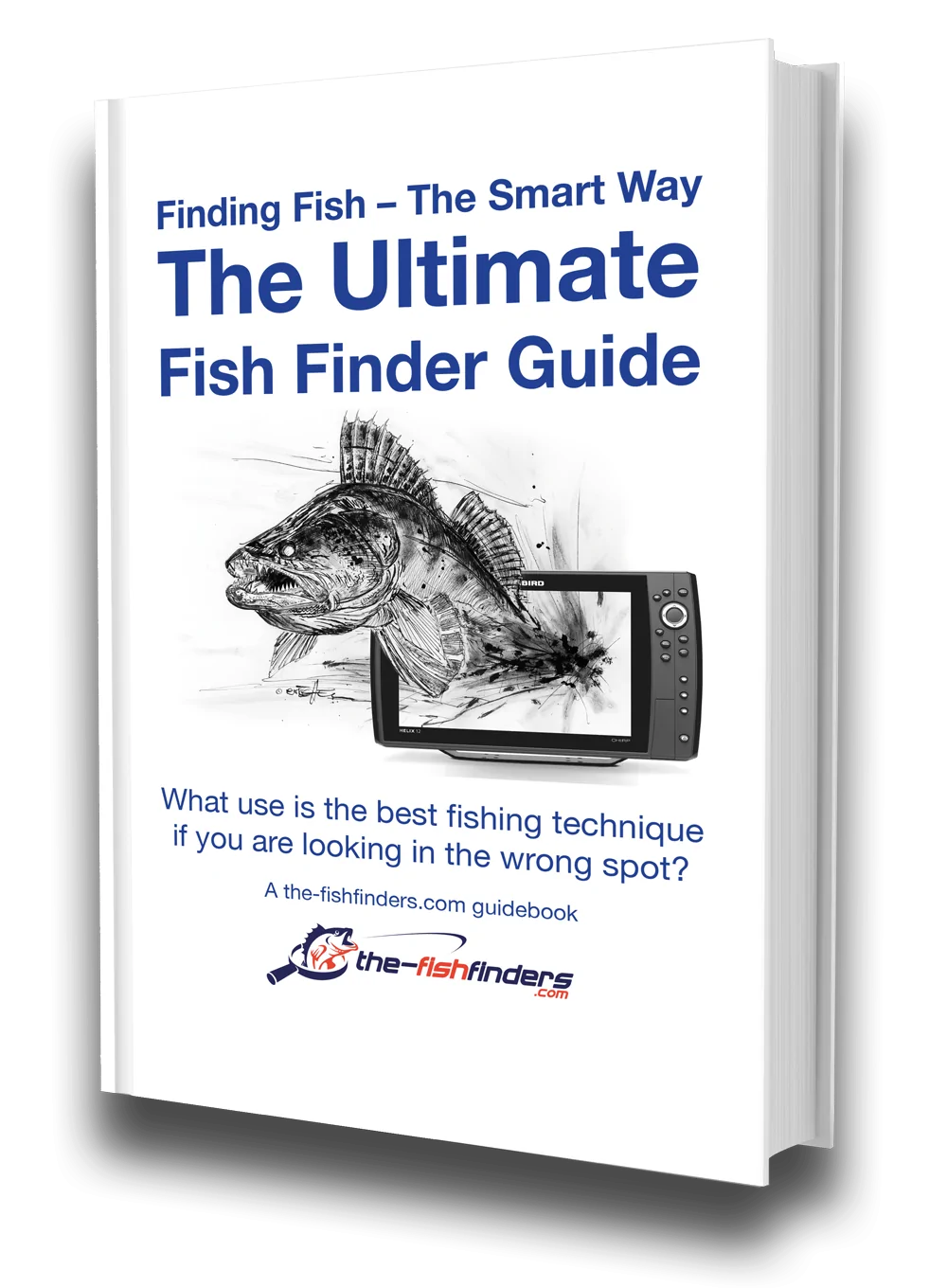
The Ultimate Fish Finder Guide
Download 40 pages for free now
Reviews ( 17 )
4.1. The inexpensive ones: Lead-acid batteries
Despite its long history (since 1850), the lead-acid battery has managed to survive to this day despite modern competition. The further development of the technology towards closed types and position-independent use, make it still suitable for use with the fish finder. Lead-acid batteries use lead plates or plate groups as electrodes, which are polarized differently (positive, negative). The electrolyte is a 37 % sulfuric acid, which can be liquid or bound. Technically, a 12 V battery is made up of six individual cells, each with a nominal voltage of 2 V. The total voltage of 12 V is therefore calculated from 6×2 V = 12 V. Depending on the manufacturer, the individual cells may have a slightly higher basic voltage, so that higher values such as 12.6 V can also result.
Two variants are interesting here for our field of application (sonar fishing):
- The sealed lead acid battery (SLA): In this variant, silica is added to the liquid, creating a gelatinous mass as electrolyte. The battery is completely sealed and maintenance-free, and can be used to supply power in practically any position (sideways, at an angle, etc.), since nothing can leak. In addition, this method eliminates the problem of varying acid concentration, which in principle cannot be prevented with a liquid. With this technology, however, the internal resistance is higher, but this is only a disadvantage when used as a starter battery. There is practically no change in the performance data compared to the classic variant.
- The absorbent glass mat battery (AGM): In this type of battery, the liquid is also bound, but in contrast to the SLA battery, it is bound by glass fiber mats. This has the same effect, but leaves the internal resistance unchanged. An AGM battery thus has all the advantages (position independence, safety, etc.) of the SLA type, but can also be used universally.
a) Advantages and disadvantages of lead batteries for a fish finder
One reason why many users still reach for a lead battery is their very good price-performance ratio. You can get a 12 V / 7-10 Ah battery of this class for around 25 €. With proper care and maintenance (storage, trickle charging during the rest months), it will still work reliably and trouble-free for several years. However, these advantages are offset by a very high dead weight, which results from the poor energy density.
Energy density is the value of the energy supply in megajoules per unit mass in kilograms. Lead batteries deliver only 0.11 MJ of energy per kilogram of weight – a lithium-ion battery, on the other hand, delivers 5-6 times that. Further compromises have to be made in terms of service life. While this type of battery can “only” cope with around 400 renewal cycles, lithium types can theoretically reach five-digit values. In addition, lead batteries discharge more quickly when at rest and do not tolerate harmful deep discharges well. However, the latter applies to lithium batteries to the same extent.
b) What is important when charging and discharging a lead acid battery
Buyers of lead batteries often give little thought to which charger they use. Cheap models from Far East production for a few euros are just right. However, when choosing a charger, it is better to think twice about what you are doing and invest a few euros more. It is always worth buying a product that charges the power storage unit automatically, microprocessor-controlled and according to the requirements of the battery.
- For example, the correct end-of-charge voltage ensures that the battery is fully charged.
- A cyclic charging rhythm with charging pauses minimizes unwanted oxyhydrogen production, which is detrimental to battery life.
- And optimized pulse charging at the end of the charging process causes the individual cells to be charged more evenly in the state of charge. This is important because even a single weak cell can render the entire battery unusable.
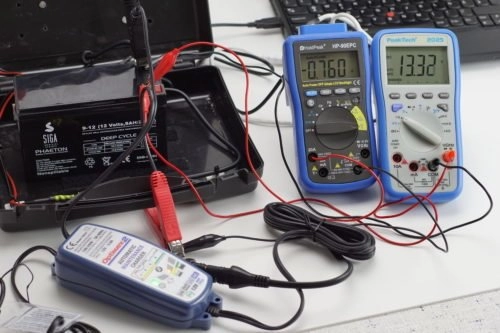
Chargers with multi-stage charging processes extend the service life and the number of possible charging cycles by quite a bit and ultimately ensure that the usable battery capacity remains within the desirable range for longer. From an economic point of view, it is also essential to avoid deep discharging the battery, as even a single process of this kind can ruin the battery. Deep discharge of a lead-acid battery begins as soon as the single cell voltage of 2 V falls below a value of 1.8 V. This is the case when this battery is discharged by more than 80 %. If you want to enjoy your SLA or AGM battery as long as possible, then you should consider the following tips:
Tip 1: Buy a battery type that is resistant to cycling.
Tip 2: Select a multi-stage, adapted charging method – in other words, do not skimp on the charger.
Tip 3: Discharge the battery only to 80 % or less during operation (let the fish finder warn you at minimum voltage) to keep the lifetime as long as possible.
c) Conclusion lead acid batteries
Lead-acid batteries are inexpensive, safe to use and reliable. However, to ensure the most efficient use, a multi-stage charging process should always be used. Disadvantages are the high weight and weak energy density of the technology. Over the years, higher internal resistance and capacity losses due to sulfation can be expected as a result of constant drying out (due to diffusion and leakage). Such can quickly reduce power draw to 50 % of nominal capacity. This aging process is further accelerated by cheap chargers. As a result, the battery has to be replaced prematurely, which is not too problematic financially given the low cost price, but is not very good for the environment due to the problematic substances it contains (lead, sulfuric acid).
4.2. The safe ones: Lithium iron phosphate batteries (LiFePo4)
While the poles of lead-acid batteries are made of the lead compounds that give them their name, lithium variants use lithium, as you would expect. Either for both or for one of the poles – while the other is made of iron phosphate. The second type was developed to provide a high degree of safety in the use of lithium batteries. Pure lithium types initially came under some criticism because they could cause problems when heated to high temperatures. LiFePo4 batteries use cells with a single voltage of 3.2 – 3.3 V. So for a 12 V LiFePo4 battery, you need four cells and thus achieve a nominal voltage of 12.8-13.2 V (depending on the cell type used).
a) Energy efficiency
The energy efficiency of a fish finder battery is of particular importance for the applications relevant to us anglers. The utilization rate of lead batteries is only about 80 % of a charging cycle, while LiFePo batteries still reach 92 %. In addition, these can maintain the state of charge over a very long period of time, while lead-acid batteries quickly lose efficiency. If the state of charge of a lead-acid battery is only 80 %, for example, the energy efficiency drops to just 50 % – in other words, the capacity of the battery has already been halved. An LFP battery, on the other hand, still has an energy efficiency of 90 % even in a flat state of discharge. In practice, this means that you can use a nominally weaker LiFePo4 battery to have the same power reserve as a much stronger lead-acid battery. In addition, the service life is extended considerably.
b) Typical properties
Compared to lead types, a LiFePo battery does not need to be fully charged before storage. Not even if it is to be kept on the shelf for a longer period of time. The range of use of this type of battery is also possible in a wide temperature range. When discharging, it ranges from -20 °C to +60 °C, which means that everything from ice fishing to tropical fishing is possible. This type of battery is also cycle resistant, which suits our field of application very well. When it comes to weight, lithium technology has a “weighty” advantage that makes it so pleasant to use – depending on the performance of the model, you can save up to 70 % of the lead weight. At higher capacities, it is still more than half the weight.
c) Battery management (BMS)
Well: Where there is a lot of light, there is naturally also a little shadow. First of all, you have to know that LiFepo cells are never 100 % identical among each other. This often leads to different states of charge of the individual cells during charging. This condition also increases continuously if the state of charge is not equalized from time to time. If the battery cells “drift” (as the technical term goes) over a long period of time, the effects can become so extreme in the long term that individual cells fail due to overcharging or undervoltage, despite a suitable overall voltage. Cell balancing is therefore mandatory for LiFePo4 batteries.
However, since unlike lead-acid cells there is no automatic balancing during the charging process, LiFePo4 batteries are fitted with control electronics that perform this task. This battery management system (BMS) ensures the necessary cell balancing during the charging process. In addition to this balancing, the BMS also performs other functions that protect the battery against deep discharge (undervoltage), overvoltage (charging current) as well as overheating. To prevent possible damage, a BMS should therefore be an integral part of a LiFePo4 battery (which it usually is).
d) Customized loading method
If you have a built-in BMS, you use a charger that masters the so-called CC/CV charging procedure and guarantees that the exact charging voltage is maintained. First, the cell is charged with a constant current (e.g. 0.8 A) until the end-of-charge voltage is reached. For LiFePo cells, this is 3.6 – 3.7 V per cell. With four cells, this results in 14.4 -14.6 V. This should be exactly maintained by the charger.
While maintaining the final voltage and with decreasing current intensity, the full charge is reached at the end. The charger compensates for differences between the individual cells with the help of the balance function of the BMS. This is done by “destroying” excess charge on the fully charged cells while continuing to charge the cells that are not yet fully adjusted, in case the balance function of the BMS is no longer sufficient. However, more about this in the test section of this article.
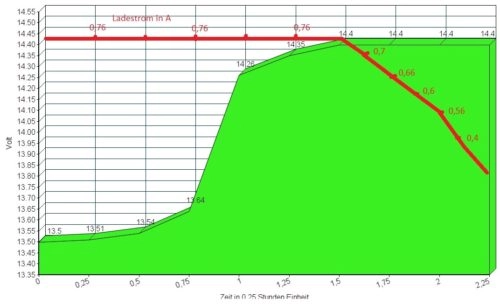
e) Advantages and disadvantages of LiFePo4 batteries for a fish finder
The advantages of lithium iron phosphate batteries are obvious. In addition to the low weight (a 7Ah model weighs only a slim 800g), this battery type scores in practice with
- high energy efficiency,
- a robust structure,
- unproblematic inner life,
- a long service life and
- easy-care handling.
It is also environmentally friendly because it requires less charging current than a comparable lead-acid battery, and it also needs to be replaced far less frequently.
The only disadvantage is the purchase price. You have to pay around four times as much as for a comparable AGM battery. As a buyer, you ultimately have to decide what is important to you in your battery. If you primarily look at the price, you have to move a lot of weight and only have limited energy resources available, which require frequent recharging. On the other hand, you can travel very comfortably, but you have to invest the equivalent of four lead-acid batteries at once. However, the purchase of a LiFePo4 battery will definitely pay off in the long run.
On the one hand, electricity costs are continuously saved during charging thanks to higher energy efficiency. On the other hand, such a battery has a much higher number of charging cycles, which arithmetically correspond to about four replacements on the AMG side. From this point of view, the purchase of an expensive LiFePo4 battery pays for itself at the latest after the third replacement of a lead-acid battery.
f) Conclusion
As so often, the purchase decision for or against a lithium-based battery lies in the personal weighting of the advantages and disadvantages. If you want the latest technology and are less interested in the purchase price, you cannot avoid a lithium battery. However, price-oriented decisions in the purchase do not have to be wrong. If the fish finder battery is only used a few times a year, you should not disregard a cost-benefit calculation. Unless a comfortable handling with low weight and the high energy reserves are paramount in the purchase decision.
-

The Ultimate Fish Finder Guide
Download 40 pages for free now
Reviews ( 17 )
- Rated 5 out of 5
Raphaël G
Very effective. - Rated 5 out of 5
Vladimir M
The book describes the fish finder physics and builds up your understanding of how it actually works. I have yet to apply this knowledge with my Humminbird, but having that much of theory is extremely helpful in understanding and processing the sonar output. - Rated 5 out of 5
NICHOLAS JOHN REECY
The Deeper Guide was just what I was looking for. YouTube is full of reviews of the sonar but little in the way of education. I highly recommend for those wanting to better understand their Deeper sonar. - Rated 5 out of 5
Henrik
I am a beginner when it comes to fishing with fish finders. For me, the book has been very informative to judge the displays on the fish finder “realistically” and to recognize what limits there are when searching for fish with the fish finder. Now I know when I have to use my regular sonar and when I have to use my ClearVü or which settings I should apply to the device at which spot. I was impressed by the many illustrations, especially for understanding the functions. - Rated 5 out of 5
Dr. Manfred Marx
Very well written, so that it is understandable even for amateurs and structured concisely. - Rated 5 out of 5
Andreas Witz
An excellent book for learning about fish finders. - Rated 5 out of 5
AK
The ultimate fish finder guide is a beneficial introduction. I am excited to put into practice what I have learned. - Rated 5 out of 5
Lübbe Wolfgang
A well-written problem solver. - Rated 5 out of 5
Kalksee
The book is unmatched for understanding how a sonar/fish finder works. I was a fish arch hunter, and I suspect my fishing tactics will change. The book has clear writing, and you understand you understand a lot the first time you read it. I can only recommend it to anyone interested in technology. Thank you for this fantastic book! Thoralf - Rated 5 out of 5
Enrico Indelicato
I had absolutely no idea about fish finders. Since I read the book, I had a real Aha experience! For me, as a beginner, very detailed and uncomplicated explained. I can only recommend it! Best regards Enrico - Rated 5 out of 5
Udo
Reading this book has suddenly made my fish finders much more valuable to me! I realized that I made typical mistakes in interpreting the images, which I will now avoid. The authors use clear, understandable language and also explain the mathematical-physical basics very well. The fact that there is no advertising for one or another fish finder manufacturer has increased its credibility. At the same time, you get a solid impression of what is feasible today on this subject – and the “advertisements” of the manufacturers also helped. The book is ABSOLUTELY to recommend, because what good is an expensive fish finder if you too often draw the wrong conclusions from the obtained illustrations? In this respect, the money for the book is very well invested. - Rated 5 out of 5
Josef Weiss
I had to wait a long time for such great explanations. Thank you. - Rated 5 out of 5
Peter
It is a well-described, scientifically sound book highly recommended to anyone who wants to advance and doesn’t already know everything. - Rated 5 out of 5
Holger Just
Ich angle seit Jahren mit Echolot. Aber erstens bleibt man da irgendwann auf einer bestimmten Verständnisstufe stehen, diese konnte ich durch dieses Buch um einiges anheben. Als zweiten Aspekt mußte ich nach dem Lesen dieses Buches erkennen, dass ich durch “gefährliches Halbwissen” jahrelang Fehlinterpretationen hatte bzw. die Möglichkeiten meines Lotes nie richtig ausgenutzt habe. Also mein Fazit : Sehr empfehlenswert, die komplexen Zusammenhänge sind verständlich beschrieben. Das Buch ist ideal geeignet um sich in der angelfreien Zeit wertvolles Wissen für die folgende Saison anzueignen und beim Thema Echolot wieder uptodate zu sein. - Rated 5 out of 5
Matthias Wappler
Sehr gut!! - Rated 5 out of 5
M. Hermanns
Wer dieses Buch nicht liest, ist selber Schuld! Kein Vortrag, kein Presseartikel oder Bericht, Nein sogar keine Online-Schulung oder gar ein 365 Tage Support, vermittelt so viele essentielle Kenntnisse, wie dieses Buch. Nach zwei drei bebilderten Erklärungen wird dir klar, das ohne dieses Wissen, die Gewinn bringende Nutzung eines Echolotes gar nicht möglich ist. Beziehungsweise dir wird klar das du dein Echolot bisher sehr ineffizient genutzt hast und das dir eine Menge verborgen geblieben ist. Ich habe nach dem ersten gleich drei weitere Exemplare gekauft und drei guten Angelfreunden eine Anerkennung für unsere Freundschaft mit diesem Buch gemacht. Alle drei verfügen über 30 Jahre Bootsangelerfahrung und alle drei waren ebenfalls begeistert, jeder konnte sein Wissen deutlich erweitern. Deshalb freue ich mich auch so sehr auf das Zanderbuch welches hoffentlich noch vor dem Wochenende bei mir ist. Liebe Grüße weiter so. dermarc - Rated 5 out of 5
TACKLEFEVER
Das Buch beginnt mit rund 15 Seiten Technik Erläuterung bei der versierte Echolot Nutzer, zu denen ich mich zähle, vielleicht geneigt sind weiter zu blättern weil sie vieles schon wissen und Anfänger weiter blättern möchten weil es zu trocken scheint. Aber etwas Basiswissen gehört einfach dazu. Selbst wenn man als Anfänger bei der Basis Theorie weiter blättern will, sobald es um Chirp geht sollte “jeder” genauer hinschauen 😉 es lohnt sich. Und auch für mich fand ich noch ein zwei kleine Dinge die ich nicht wusste oder noch nicht im Zusammenhang mit anderem sah. Die weiteren Abschnitte (bis Kap. 3) befassen sich mit den verschiedenen Techniken der Geber, Bildschirme, oder dem Smartphone, dem Tablet als Anzeigemedium. Was mir bis dahin sehr positiv auffiel waren die “MERKE-Boxen”, kleine übersichtliche Passagen welche Kerninformationen des zuvor vermittelten Wissen zusammenfassend hervorheben. Auch wenn man nicht alles komplett verstanden hat, hilft diese leicht verständliche Zusammenfassung des voraus gegangenen Inhalts sehr. Kapitel 4 geht auf 2D, Down-Imaging, Side-Scan-Sonar ein, dabei ohne zu konkret auf einen Hersteller abzustellen was ich ebenfalls sehr positiv fand. Dem Angler wird der praktische Einsatz und das Verstehen dessen was man auf dem Echolot sieht erläutert. Fragen wie z.B.: Wo befindet sich der Fisch genau? Was ist eine Fischsichel? Wie setze ich das Echolot beim Vertikalangeln ein? Warum gibt es Vertiefungen obwohl man keine sieht und umgekehrt? Wie erkenne ich die Bodenbeschaffenheit? Fragen zur richtigen Deutung der Unterwasserstruktur, dem optimalen Bildlauf- und Boots- Geschwindigkeit, der Sprungschicht, usw. werden auch beantwortet. Würde ich alles aufzählen würde es hier zu weit führen. Es folgen noch kurze Infos zur Multibeam Technik und ein Kapitel “Die 3D Show mit Garmins Panoptix”. Hier wurde für mich zu wenig Wissen vermittelt, nur auf einen Herstellers gezeigt und nicht auf ähnliche Funktionen oder Techniken anderer Hersteller Bezug genommen. Ich hoffe es kommt in der nächsten Auflage mehr zu dem Thema. Am Ende des Buches kommen Infos rund um konkrete Einstellungen am Echolot. Hier wird einer der wichtigsten Punkte überhaupt behandelt und dies praxisnah und hilfreich. Aller spätestens jetzt lohnt sich das Buch für alle Neueinsteiger. Viel einfacher und kompakter geht es kaum. Ein paar wichtige zuvor besprochene Punkte zu Einstellungen bei bestimmten Echolot Funktionen werden erläutert und mit Checklisten im Kapitel “Die effektivsten Einstellungen beim Echolot auf einen Blick” zusammen gefasst. Hier lohnt es sich für Anfänger die Seiten besonders aufmerksam zu lesen und vielleicht als Kopie mit auf Boot zu nehmen. Damit fällt der Kampf mit den gefühlten tausenden von Einstellungen am Echolot auf dem Wasser leichter. Es klingt fast zu schön um wahr zu sein, aber tatsächlich scheint mir das Buch für Anfänger und Fortgeschrittene Anwender gleichermaßen gut geeignet zu sein. Manchmal suchte ich mehr Hintergrundwissen, weil der im Prinzip sehr gute Ansatz es für Anfänger leicht verständlich zu halten manche Herstellerabhängige Feinheiten außer Acht lässt. Das Buch hat eine gute Gliederung, fasst vieles kompakt zusammen und geht bei wichtigen Punkten auch meist für Fortgeschrittene etwas in die Tiefe. So richtet sich das Buch meiner Meinung nach nicht an wissenschaftliche Anwender, sondern an Echolot Neulinge indem es auch viele Basis Fragen beantwortet ebenso auch an Fortgeschrittene indem es auf diverse Punkte tiefer eingeht. Wenn ich den Sinn des Buches in einem Satz beschreiben sollte, dann wäre dies: Echolottechnik für Anfänger interessant und verständlich erklären und dabei auch ein wenig tieferes Wissen für alle zu vermitteln. Mir ist Stand Juni 2017 kein anderes Buch bekannt das diesen Ansatz so konsequent verfolgt. Ich hoffe ihr habt so viel Spaß beim lesen wie ich. Luke www.tacklefever.de
4.3. The energy hammer: Lithium-ion battery
Lithium-ion batteries are the actual generic term for all lithium-based constellations, which can however differ in the material of the individual battery components. Depending on the composition, there can be differences in performance, which are based on the respective material quality or composition. Here, we only want to use the term lithium-ion battery to refer to conventional lithium-ion technology, which exclusively uses lithium as anode and cathode material in the pole area.
a) Features
Conventional lithium-ion cells supply a nominal voltage of around 3.6 V. The end-of-charge voltage is around 4.2 V. The critical end-of-discharge voltage can be set at 2.5 V. From this value at the latest the harmful deep discharge starts, which should be avoided under all circumstances. Depending on the manufacturer, the values specified here can also deviate slightly.
At least three cells are required for a 12 V battery with this technology. Although this only results in a value of 11.1 V for the nominal voltage (at 3.7 V per individual cell), the bandwidth after full charge is fully within the tolerance range in the discharge cycle that a 12 V consumer requires. You can follow an exemplary discharge process in the test area further down in the article.
b) Advantages of the technology
The highlight of Li-ion technology is the high energy density that can be achieved, which allows small and very lightweight units to be built. Despite their small dimensions, these meet high performance requirements. For fish finder use and the already mentioned standard housing 151 x 95 x 65, 9 – 10 Ah are the limit for AGM batteries. Even LiFePo4 types do not get beyond this. With Li-Ion cells, however, it is possible to accommodate even 18 Ah of capacity in this type of housing. Such a battery (which we also have in the test) weighs only 1.1 kg. A corresponding AGM fish finder battery is at least twice as large and weighs a good 5 kg. An impressive weight saving – and at the same time a significantly higher energy yield. In addition, thanks to intensive research work and further development, Li-Ion batteries have greatly improved in durability – and more importantly – in terms of safety in recent years.
c) Longevity and safety
Li-ion batteries initially came in for a lot of criticism because they were seen as a safety risk due to incorrect operation (overcharging, short circuit, etc.). In the laboratory, it was possible to recreate these conditions and prove that fires and explosions were possible. This led to the dangerous goods classification of lithium batteries and caused us anglers to fall back on LiFePo4 technology, which was considered safe, as a precaution. In the meantime, however, these reservations are off the table, since the battery types are technically more mature and are also adequately protected (e.g. by protective circuits). In this respect, there should no longer be any concerns about using this type of battery as a fish finder battery.
A second problem area of Li-Ion batteries used to be their longevity. Today, a fixed calendar service life is no longer assumed, but can be based on the expected charging cycles. With good care, these can certainly be in the order of 1500 – 5000. Since the achievable number depends on various factors, you as a user have it in your own hands, how long the joy of your sonar battery lasts. Apart from the battery quality itself, take e.g.
- storage and operating temperatures,
- discharge and charge currents as well as
- the end-of-charge voltage
influence on the shelf life. Thus, high temperatures are just as damaging as very low ones. The same applies to high charging currents (fast charging), especially when the battery is in a flat discharge state. Shallow charging (low current) and loads that draw little energy in relation to the available total capacity, on the other hand, can significantly extend the service life.
You can also significantly contribute to the shelf life with your discharging habits. If you usually only discharge your battery to 80 %, you can double the number of possible charging cycles. For us anglers, this means that every time we make a purchase decision, we have to adapt the battery to the consumption data of our fish finder. It makes then no sense to supply a 10-inch device (1.1 A) with a 7 Ah battery. To operate a 5-inch model (0.5 A) with 18 Ah is just as little harmful – but in any case uneconomical.
Practical tip: Simple rule of thumb – multiply the average power consumption of your fish finder by ten. This should be the minimum capacity of the Li-battery. As a short calculation example: i = 0.8 Ah c20 = 0.8×10 = 8 Ah.
d) Charging and discharging
The charging procedure is the same as described for LiFePo4 batteries. First, charging is performed at a constant current until the end-of-charge voltage is reached, then full charging is achieved while maintaining the voltage with decreasing current. The end-of-charge voltage is 4.2 V. With 3 cells this is therefore 12.6 V or 16.8 V with four. The CC/CV standard charging procedure is usually sufficient. Caution is only required if the battery has been discharged too much. Here, the charger should be able to work in steps (i.e. initially with smaller values than the normal charge strengths) in order not to damage the cells. Higher-quality chargers have an adapted charging behavior in their “program”. This preserves the available energy resources and protects the cells from premature aging.
In practice, all battery types presented here show a rapid drop in voltage values from the quiescent voltage (which is close to the end-of-charge voltage) to the nominal voltage, which in the case of lithium-ion fishfinder batteries is 3.6 – 3.7 V per individual cell. These are then more stable for a long period in the voltage drop, which only increases again more sharply as soon as it approaches the end of capacity. The limits start at about 2.9 V per cell, all values below 2.5 V already permanently damage the battery.
In addition, the end-of-discharge voltage is not a fixed value, but can occur earlier if the discharge currents are comparatively high. This effect can be seen as a by-product of Peukert’s findings on capacity changes at high discharge currents. In this respect, it is advisable to disconnect the battery from the “mains” as soon as the still safe 3 V limit is reached.
Tip: As a precaution, only discharge the battery to a end-of-charge voltage of 3V per cell (9V for three cells, 12V for four cells).
e) Protection circuit (BMS)
Electronic protection of the Li-Ion battery by a BMS circuit is standard throughout today. It is intended to prevent incorrect handling of the sensitive materials. This increases safety and protects the user from major damage. Even in the event of possible mishandling. BMS circuits prevent
- overcharching,
- undervoltage (deep discharge),
- as well as thermal overload.
- In addition, they take over the cell balancing during the charging process, so that the use of this battery type is generally unproblematic.
Nevertheless, such protective circuits are always a kind of emergency backup, which you should not exhaust, if the care of your fish finder battery is a concern. Here you are on the safe side if you stay in the “green range”. In our fish finder battery tests (further down in this article), we have used the recorded discharge curves to work out how the careful handling of such an energy storage can look. There you can read our considerations in detail.
f) Conclusion and advantages and disadvantages of lithium-ion batteries for a fish finder
Even at second glance, Li-ion batteries would be perfect for powering the fish finder if there wasn’t the acquisition hurdle in the way. Because these are always relatively expensive compared to the standard AGM lead. On the other hand they offer
- with their high energy density at low weight,
- their durability,
- robustness
- and with adapted loaders also with their low maintenance requirements.
a more than adequate alternative. The weight and performance advantages over the LiFePo4 variants are understandably reflected in the price. For fish finders from 9 inches (with an average power requirement of good 1 A), a Li-Ion battery (e.g. the 18 Ah variant) is the right choice because of its high energy reserve in a small space. Up to the 7-inch fish finders, however, the LiFePo4 representatives still cut a good figure. The only argument in favor of lead batteries for a fish finder is the price – everything else is no longer up to date.
5. Fish finder battery and charger test
In the following chapters we present you the results of our fish finder battery and charger test. For this test, we put the following battery types through their paces in combination with a suitable charger:
- Lead battery: Siga AGM 12 V / 8 Ah plus charger Optima 2 TM420 12 V / 0.8 A.
- Lithium iron phosphate battery (LiFePo4): Jubatec LiFePo4 battery 12 V / 8 Ah plus charger Optima TM470 12V / 0.8A.
- Lithium-ion battery (Li-ION): Rebel Cell lithium-ion battery 12 V / 18 Ah plus charger Rebel Cell 12.6 V / 4 A.
One of the most important questions we wanted to clarify in our test was whether lithium-based batteries (among their other advantages and benefits) actually run longer with the same nominal size. This is an assertion that persistently makes the rounds in angling circles and forums, but has not yet been empirically proven – or disproven.
For this purpose, we used a power consumer that constantly consumes current in the order of 0.732 A per hour from the battery. A fish finder fluctuates constantly in power consumption during operation. With a Lowrance HDS 7 Carbon we had measured values of 0.68 A to 9.45 A, whereby the high values occurred only with the system start – in the current enterprise they leveled off on the average with about 0.75 A. Our consumer thus reproduced an adjusted value, which, however, remained constant for the measurement in all candidates and thus ensured comparability. Based on our measurement data, we can now make reliable statements about how the three fish finder battery types would behave in practice if they had to supply a 7-inch combo device.
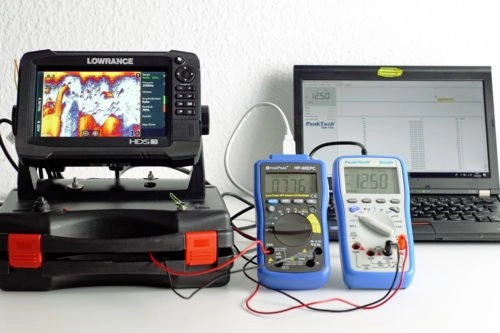
All values were recorded with two USB-capable measuring devices (PeakTech and HoldPeak) and recorded continuously (15-minute interval) on a laptop connected to them. For a better overview, we only show the recordings of the hourly values here. We have summarized these in a descriptive diagram so that you can quickly get a good overview of the discharge behavior of the respective fish finder battery.
-

The Ultimate Fish Finder Guide
Download 40 pages for free now
Reviews ( 17 )
- Rated 5 out of 5
Raphaël G
Very effective. - Rated 5 out of 5
Vladimir M
The book describes the fish finder physics and builds up your understanding of how it actually works. I have yet to apply this knowledge with my Humminbird, but having that much of theory is extremely helpful in understanding and processing the sonar output. - Rated 5 out of 5
NICHOLAS JOHN REECY
The Deeper Guide was just what I was looking for. YouTube is full of reviews of the sonar but little in the way of education. I highly recommend for those wanting to better understand their Deeper sonar. - Rated 5 out of 5
Henrik
I am a beginner when it comes to fishing with fish finders. For me, the book has been very informative to judge the displays on the fish finder “realistically” and to recognize what limits there are when searching for fish with the fish finder. Now I know when I have to use my regular sonar and when I have to use my ClearVü or which settings I should apply to the device at which spot. I was impressed by the many illustrations, especially for understanding the functions. - Rated 5 out of 5
Dr. Manfred Marx
Very well written, so that it is understandable even for amateurs and structured concisely. - Rated 5 out of 5
Andreas Witz
An excellent book for learning about fish finders. - Rated 5 out of 5
AK
The ultimate fish finder guide is a beneficial introduction. I am excited to put into practice what I have learned. - Rated 5 out of 5
Lübbe Wolfgang
A well-written problem solver. - Rated 5 out of 5
Kalksee
The book is unmatched for understanding how a sonar/fish finder works. I was a fish arch hunter, and I suspect my fishing tactics will change. The book has clear writing, and you understand you understand a lot the first time you read it. I can only recommend it to anyone interested in technology. Thank you for this fantastic book! Thoralf - Rated 5 out of 5
Enrico Indelicato
I had absolutely no idea about fish finders. Since I read the book, I had a real Aha experience! For me, as a beginner, very detailed and uncomplicated explained. I can only recommend it! Best regards Enrico - Rated 5 out of 5
Udo
Reading this book has suddenly made my fish finders much more valuable to me! I realized that I made typical mistakes in interpreting the images, which I will now avoid. The authors use clear, understandable language and also explain the mathematical-physical basics very well. The fact that there is no advertising for one or another fish finder manufacturer has increased its credibility. At the same time, you get a solid impression of what is feasible today on this subject – and the “advertisements” of the manufacturers also helped. The book is ABSOLUTELY to recommend, because what good is an expensive fish finder if you too often draw the wrong conclusions from the obtained illustrations? In this respect, the money for the book is very well invested. - Rated 5 out of 5
Josef Weiss
I had to wait a long time for such great explanations. Thank you. - Rated 5 out of 5
Peter
It is a well-described, scientifically sound book highly recommended to anyone who wants to advance and doesn’t already know everything. - Rated 5 out of 5
Holger Just
Ich angle seit Jahren mit Echolot. Aber erstens bleibt man da irgendwann auf einer bestimmten Verständnisstufe stehen, diese konnte ich durch dieses Buch um einiges anheben. Als zweiten Aspekt mußte ich nach dem Lesen dieses Buches erkennen, dass ich durch “gefährliches Halbwissen” jahrelang Fehlinterpretationen hatte bzw. die Möglichkeiten meines Lotes nie richtig ausgenutzt habe. Also mein Fazit : Sehr empfehlenswert, die komplexen Zusammenhänge sind verständlich beschrieben. Das Buch ist ideal geeignet um sich in der angelfreien Zeit wertvolles Wissen für die folgende Saison anzueignen und beim Thema Echolot wieder uptodate zu sein. - Rated 5 out of 5
Matthias Wappler
Sehr gut!! - Rated 5 out of 5
M. Hermanns
Wer dieses Buch nicht liest, ist selber Schuld! Kein Vortrag, kein Presseartikel oder Bericht, Nein sogar keine Online-Schulung oder gar ein 365 Tage Support, vermittelt so viele essentielle Kenntnisse, wie dieses Buch. Nach zwei drei bebilderten Erklärungen wird dir klar, das ohne dieses Wissen, die Gewinn bringende Nutzung eines Echolotes gar nicht möglich ist. Beziehungsweise dir wird klar das du dein Echolot bisher sehr ineffizient genutzt hast und das dir eine Menge verborgen geblieben ist. Ich habe nach dem ersten gleich drei weitere Exemplare gekauft und drei guten Angelfreunden eine Anerkennung für unsere Freundschaft mit diesem Buch gemacht. Alle drei verfügen über 30 Jahre Bootsangelerfahrung und alle drei waren ebenfalls begeistert, jeder konnte sein Wissen deutlich erweitern. Deshalb freue ich mich auch so sehr auf das Zanderbuch welches hoffentlich noch vor dem Wochenende bei mir ist. Liebe Grüße weiter so. dermarc - Rated 5 out of 5
TACKLEFEVER
Das Buch beginnt mit rund 15 Seiten Technik Erläuterung bei der versierte Echolot Nutzer, zu denen ich mich zähle, vielleicht geneigt sind weiter zu blättern weil sie vieles schon wissen und Anfänger weiter blättern möchten weil es zu trocken scheint. Aber etwas Basiswissen gehört einfach dazu. Selbst wenn man als Anfänger bei der Basis Theorie weiter blättern will, sobald es um Chirp geht sollte “jeder” genauer hinschauen 😉 es lohnt sich. Und auch für mich fand ich noch ein zwei kleine Dinge die ich nicht wusste oder noch nicht im Zusammenhang mit anderem sah. Die weiteren Abschnitte (bis Kap. 3) befassen sich mit den verschiedenen Techniken der Geber, Bildschirme, oder dem Smartphone, dem Tablet als Anzeigemedium. Was mir bis dahin sehr positiv auffiel waren die “MERKE-Boxen”, kleine übersichtliche Passagen welche Kerninformationen des zuvor vermittelten Wissen zusammenfassend hervorheben. Auch wenn man nicht alles komplett verstanden hat, hilft diese leicht verständliche Zusammenfassung des voraus gegangenen Inhalts sehr. Kapitel 4 geht auf 2D, Down-Imaging, Side-Scan-Sonar ein, dabei ohne zu konkret auf einen Hersteller abzustellen was ich ebenfalls sehr positiv fand. Dem Angler wird der praktische Einsatz und das Verstehen dessen was man auf dem Echolot sieht erläutert. Fragen wie z.B.: Wo befindet sich der Fisch genau? Was ist eine Fischsichel? Wie setze ich das Echolot beim Vertikalangeln ein? Warum gibt es Vertiefungen obwohl man keine sieht und umgekehrt? Wie erkenne ich die Bodenbeschaffenheit? Fragen zur richtigen Deutung der Unterwasserstruktur, dem optimalen Bildlauf- und Boots- Geschwindigkeit, der Sprungschicht, usw. werden auch beantwortet. Würde ich alles aufzählen würde es hier zu weit führen. Es folgen noch kurze Infos zur Multibeam Technik und ein Kapitel “Die 3D Show mit Garmins Panoptix”. Hier wurde für mich zu wenig Wissen vermittelt, nur auf einen Herstellers gezeigt und nicht auf ähnliche Funktionen oder Techniken anderer Hersteller Bezug genommen. Ich hoffe es kommt in der nächsten Auflage mehr zu dem Thema. Am Ende des Buches kommen Infos rund um konkrete Einstellungen am Echolot. Hier wird einer der wichtigsten Punkte überhaupt behandelt und dies praxisnah und hilfreich. Aller spätestens jetzt lohnt sich das Buch für alle Neueinsteiger. Viel einfacher und kompakter geht es kaum. Ein paar wichtige zuvor besprochene Punkte zu Einstellungen bei bestimmten Echolot Funktionen werden erläutert und mit Checklisten im Kapitel “Die effektivsten Einstellungen beim Echolot auf einen Blick” zusammen gefasst. Hier lohnt es sich für Anfänger die Seiten besonders aufmerksam zu lesen und vielleicht als Kopie mit auf Boot zu nehmen. Damit fällt der Kampf mit den gefühlten tausenden von Einstellungen am Echolot auf dem Wasser leichter. Es klingt fast zu schön um wahr zu sein, aber tatsächlich scheint mir das Buch für Anfänger und Fortgeschrittene Anwender gleichermaßen gut geeignet zu sein. Manchmal suchte ich mehr Hintergrundwissen, weil der im Prinzip sehr gute Ansatz es für Anfänger leicht verständlich zu halten manche Herstellerabhängige Feinheiten außer Acht lässt. Das Buch hat eine gute Gliederung, fasst vieles kompakt zusammen und geht bei wichtigen Punkten auch meist für Fortgeschrittene etwas in die Tiefe. So richtet sich das Buch meiner Meinung nach nicht an wissenschaftliche Anwender, sondern an Echolot Neulinge indem es auch viele Basis Fragen beantwortet ebenso auch an Fortgeschrittene indem es auf diverse Punkte tiefer eingeht. Wenn ich den Sinn des Buches in einem Satz beschreiben sollte, dann wäre dies: Echolottechnik für Anfänger interessant und verständlich erklären und dabei auch ein wenig tieferes Wissen für alle zu vermitteln. Mir ist Stand Juni 2017 kein anderes Buch bekannt das diesen Ansatz so konsequent verfolgt. Ich hoffe ihr habt so viel Spaß beim lesen wie ich. Luke www.tacklefever.de
5.1. Fish finder lead battery: Siga AGM plus charger Optima 2 TM420
For our test from the AGM camp, we have chosen an inexpensive 12 V / 9 Ah model from the German supplier Siga Mannheim. The company has a wide range of batteries for almost all applications. Siga relies on the latest technology, looks back on 35 years of experience in production and advertises with “German Quality”. The test sample comes from the Phaeton series, which is designed for cycle stability (deep-cycle type).
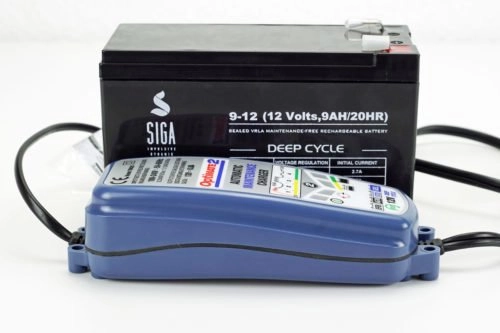
The manufacturer specifies a wide temperature range between -20 °C and +60 °C for the battery, as well as a low self-discharge of < 3 %/month. At a maximum discharge of 75 %, around 500 charge cycles are said to be possible. It consists of six single cells with a nominal voltage of 2.1 V each and therefore has a nominal voltage of 12.6 V. A end-of-charge voltage of 14.6 – 14.8 V is specified. The workmanship is impeccable, and the battery’s most important data including safety instructions are printed on it.
The power consumption is controlled via 6.3 mm Feston connectors. The housing corresponds to the standard dimensions 151 x 95 x 65 mm. The weight is 2.64 kg (weighed). We used an Optimate TM420 charger for our runtime test.
a) The structure of the runtime test
In the runtime test, we wanted to know how long the battery would last in operation to power a fish finder combo unit with a 7-inch screen. To get a comparison, we also connected it to a power consumer that drew a constant 0.732 A current. In both constellations, voltage readings were recorded every 15 minutes using a PeakTec meter. In parallel, the current draw would be monitored with a second meter.
The Peukert formula calculated a theoretical runtime of 10.5 hours. However, we could not confirm this in our test. Since the manufacturer specifies a end-of-charge voltage of up to 14.8 V, but our charger only provided 14.4 V, it is just as likely that the battery did not reach its full capacity in the test.
b) Our findings from the runtime test
In the fully charged state, higher values (here 12.8 V) than the nominal voltage (in this case 12.6 V) are to be expected under load at the start. Unlike lithium batteries, however, the starting value is significantly further away from the end-of-charge voltage (14.6 V – 14.8 V in this case). This is not surprising, however, since the nominal voltages of the two battery types also differ significantly: 13.2 V (LiFePo) and 12.6 V (AGM).
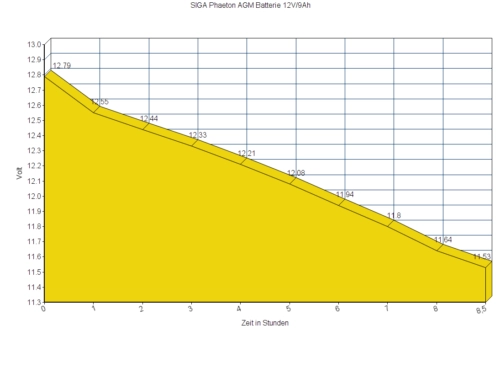
We note: The Siga AGM battery achieved a runtime of around 8 h in our test constellation in both runs. In practical operation, the battery should be disconnected from the mains at around 11.7 V when the current consumption is similar to our test specification. A corresponding warning can be set in the fish finder. For smaller fish finders, the value can be set further down (see Peukert effect and earlier deep discharge).
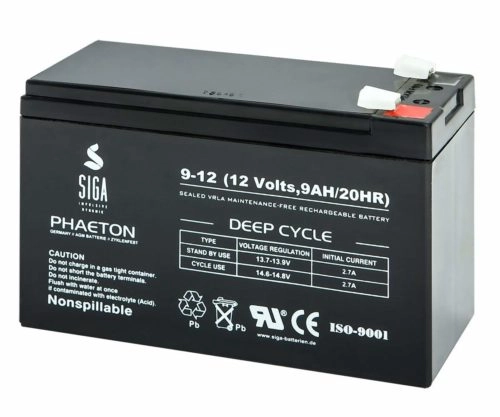
c) Conclusion Siga Phaeton AGM 12 V / 9 Ah
Our AGM test specimen exemplified the characteristics to be expected from a lead battery representative. Despite a capacity of 9 Ah, its runtimes remained somewhat below expectations in the test. However, one has to consider the possibility of a failed full charge as well as the fact that it had not yet reached its full capacity after 2 charge cycles. At a price of slightly over 20 €, however, the Siga is a good deal that can safely power a 7-inch fish finder for a long (single) day of fishing. For us, it is therefore definitely worth a recommendation, especially in terms of price-performance ratio.
-

The Ultimate Fish Finder Guide
Download 40 pages for free now
Reviews ( 17 )
- Rated 5 out of 5
Raphaël G
Very effective. - Rated 5 out of 5
Vladimir M
The book describes the fish finder physics and builds up your understanding of how it actually works. I have yet to apply this knowledge with my Humminbird, but having that much of theory is extremely helpful in understanding and processing the sonar output. - Rated 5 out of 5
NICHOLAS JOHN REECY
The Deeper Guide was just what I was looking for. YouTube is full of reviews of the sonar but little in the way of education. I highly recommend for those wanting to better understand their Deeper sonar. - Rated 5 out of 5
Henrik
I am a beginner when it comes to fishing with fish finders. For me, the book has been very informative to judge the displays on the fish finder “realistically” and to recognize what limits there are when searching for fish with the fish finder. Now I know when I have to use my regular sonar and when I have to use my ClearVü or which settings I should apply to the device at which spot. I was impressed by the many illustrations, especially for understanding the functions. - Rated 5 out of 5
Dr. Manfred Marx
Very well written, so that it is understandable even for amateurs and structured concisely. - Rated 5 out of 5
Andreas Witz
An excellent book for learning about fish finders. - Rated 5 out of 5
AK
The ultimate fish finder guide is a beneficial introduction. I am excited to put into practice what I have learned. - Rated 5 out of 5
Lübbe Wolfgang
A well-written problem solver. - Rated 5 out of 5
Kalksee
The book is unmatched for understanding how a sonar/fish finder works. I was a fish arch hunter, and I suspect my fishing tactics will change. The book has clear writing, and you understand you understand a lot the first time you read it. I can only recommend it to anyone interested in technology. Thank you for this fantastic book! Thoralf - Rated 5 out of 5
Enrico Indelicato
I had absolutely no idea about fish finders. Since I read the book, I had a real Aha experience! For me, as a beginner, very detailed and uncomplicated explained. I can only recommend it! Best regards Enrico - Rated 5 out of 5
Udo
Reading this book has suddenly made my fish finders much more valuable to me! I realized that I made typical mistakes in interpreting the images, which I will now avoid. The authors use clear, understandable language and also explain the mathematical-physical basics very well. The fact that there is no advertising for one or another fish finder manufacturer has increased its credibility. At the same time, you get a solid impression of what is feasible today on this subject – and the “advertisements” of the manufacturers also helped. The book is ABSOLUTELY to recommend, because what good is an expensive fish finder if you too often draw the wrong conclusions from the obtained illustrations? In this respect, the money for the book is very well invested. - Rated 5 out of 5
Josef Weiss
I had to wait a long time for such great explanations. Thank you. - Rated 5 out of 5
Peter
It is a well-described, scientifically sound book highly recommended to anyone who wants to advance and doesn’t already know everything. - Rated 5 out of 5
Holger Just
Ich angle seit Jahren mit Echolot. Aber erstens bleibt man da irgendwann auf einer bestimmten Verständnisstufe stehen, diese konnte ich durch dieses Buch um einiges anheben. Als zweiten Aspekt mußte ich nach dem Lesen dieses Buches erkennen, dass ich durch “gefährliches Halbwissen” jahrelang Fehlinterpretationen hatte bzw. die Möglichkeiten meines Lotes nie richtig ausgenutzt habe. Also mein Fazit : Sehr empfehlenswert, die komplexen Zusammenhänge sind verständlich beschrieben. Das Buch ist ideal geeignet um sich in der angelfreien Zeit wertvolles Wissen für die folgende Saison anzueignen und beim Thema Echolot wieder uptodate zu sein. - Rated 5 out of 5
Matthias Wappler
Sehr gut!! - Rated 5 out of 5
M. Hermanns
Wer dieses Buch nicht liest, ist selber Schuld! Kein Vortrag, kein Presseartikel oder Bericht, Nein sogar keine Online-Schulung oder gar ein 365 Tage Support, vermittelt so viele essentielle Kenntnisse, wie dieses Buch. Nach zwei drei bebilderten Erklärungen wird dir klar, das ohne dieses Wissen, die Gewinn bringende Nutzung eines Echolotes gar nicht möglich ist. Beziehungsweise dir wird klar das du dein Echolot bisher sehr ineffizient genutzt hast und das dir eine Menge verborgen geblieben ist. Ich habe nach dem ersten gleich drei weitere Exemplare gekauft und drei guten Angelfreunden eine Anerkennung für unsere Freundschaft mit diesem Buch gemacht. Alle drei verfügen über 30 Jahre Bootsangelerfahrung und alle drei waren ebenfalls begeistert, jeder konnte sein Wissen deutlich erweitern. Deshalb freue ich mich auch so sehr auf das Zanderbuch welches hoffentlich noch vor dem Wochenende bei mir ist. Liebe Grüße weiter so. dermarc - Rated 5 out of 5
TACKLEFEVER
Das Buch beginnt mit rund 15 Seiten Technik Erläuterung bei der versierte Echolot Nutzer, zu denen ich mich zähle, vielleicht geneigt sind weiter zu blättern weil sie vieles schon wissen und Anfänger weiter blättern möchten weil es zu trocken scheint. Aber etwas Basiswissen gehört einfach dazu. Selbst wenn man als Anfänger bei der Basis Theorie weiter blättern will, sobald es um Chirp geht sollte “jeder” genauer hinschauen 😉 es lohnt sich. Und auch für mich fand ich noch ein zwei kleine Dinge die ich nicht wusste oder noch nicht im Zusammenhang mit anderem sah. Die weiteren Abschnitte (bis Kap. 3) befassen sich mit den verschiedenen Techniken der Geber, Bildschirme, oder dem Smartphone, dem Tablet als Anzeigemedium. Was mir bis dahin sehr positiv auffiel waren die “MERKE-Boxen”, kleine übersichtliche Passagen welche Kerninformationen des zuvor vermittelten Wissen zusammenfassend hervorheben. Auch wenn man nicht alles komplett verstanden hat, hilft diese leicht verständliche Zusammenfassung des voraus gegangenen Inhalts sehr. Kapitel 4 geht auf 2D, Down-Imaging, Side-Scan-Sonar ein, dabei ohne zu konkret auf einen Hersteller abzustellen was ich ebenfalls sehr positiv fand. Dem Angler wird der praktische Einsatz und das Verstehen dessen was man auf dem Echolot sieht erläutert. Fragen wie z.B.: Wo befindet sich der Fisch genau? Was ist eine Fischsichel? Wie setze ich das Echolot beim Vertikalangeln ein? Warum gibt es Vertiefungen obwohl man keine sieht und umgekehrt? Wie erkenne ich die Bodenbeschaffenheit? Fragen zur richtigen Deutung der Unterwasserstruktur, dem optimalen Bildlauf- und Boots- Geschwindigkeit, der Sprungschicht, usw. werden auch beantwortet. Würde ich alles aufzählen würde es hier zu weit führen. Es folgen noch kurze Infos zur Multibeam Technik und ein Kapitel “Die 3D Show mit Garmins Panoptix”. Hier wurde für mich zu wenig Wissen vermittelt, nur auf einen Herstellers gezeigt und nicht auf ähnliche Funktionen oder Techniken anderer Hersteller Bezug genommen. Ich hoffe es kommt in der nächsten Auflage mehr zu dem Thema. Am Ende des Buches kommen Infos rund um konkrete Einstellungen am Echolot. Hier wird einer der wichtigsten Punkte überhaupt behandelt und dies praxisnah und hilfreich. Aller spätestens jetzt lohnt sich das Buch für alle Neueinsteiger. Viel einfacher und kompakter geht es kaum. Ein paar wichtige zuvor besprochene Punkte zu Einstellungen bei bestimmten Echolot Funktionen werden erläutert und mit Checklisten im Kapitel “Die effektivsten Einstellungen beim Echolot auf einen Blick” zusammen gefasst. Hier lohnt es sich für Anfänger die Seiten besonders aufmerksam zu lesen und vielleicht als Kopie mit auf Boot zu nehmen. Damit fällt der Kampf mit den gefühlten tausenden von Einstellungen am Echolot auf dem Wasser leichter. Es klingt fast zu schön um wahr zu sein, aber tatsächlich scheint mir das Buch für Anfänger und Fortgeschrittene Anwender gleichermaßen gut geeignet zu sein. Manchmal suchte ich mehr Hintergrundwissen, weil der im Prinzip sehr gute Ansatz es für Anfänger leicht verständlich zu halten manche Herstellerabhängige Feinheiten außer Acht lässt. Das Buch hat eine gute Gliederung, fasst vieles kompakt zusammen und geht bei wichtigen Punkten auch meist für Fortgeschrittene etwas in die Tiefe. So richtet sich das Buch meiner Meinung nach nicht an wissenschaftliche Anwender, sondern an Echolot Neulinge indem es auch viele Basis Fragen beantwortet ebenso auch an Fortgeschrittene indem es auf diverse Punkte tiefer eingeht. Wenn ich den Sinn des Buches in einem Satz beschreiben sollte, dann wäre dies: Echolottechnik für Anfänger interessant und verständlich erklären und dabei auch ein wenig tieferes Wissen für alle zu vermitteln. Mir ist Stand Juni 2017 kein anderes Buch bekannt das diesen Ansatz so konsequent verfolgt. Ich hoffe ihr habt so viel Spaß beim lesen wie ich. Luke www.tacklefever.de
d) The charger used Tecmate Optimate TM 420 12 V / 0.8 A
According to the Belgian manufacturer Tecmate, the battery charger is a charging and maintenance device especially for encapsulated lead batteries. Multi-stage charging, as well as optimization and maintenance programs, are designed to charge and maintain one according to its requirements. Accidentally deeply discharged (“empty”) batteries can also be revived with an integrated low-voltage pulse recovery process.
The provider refers to this as a four-stage charging process. This first checks whether there is a more or less deep discharge (individual voltage below 2 V). If this is the case, stage 1 (low voltage save) is activated. The device then continues the normal charging process (stage 2) until the end-of-charge voltage of 14.4 V is reached. The third stage is used for optimization, i.e. full charging as well as checking the individual cells. Here the TM420 first applies surge pulses of 14.4 V and then enters a resting state. In this state the single cells are checked again separately for the ability to hold the voltage. This phase thus serves the cell balancing in the charging process.
The last stage again serves to maintain the optimum state of charge and can also be used for battery monitoring. During our test runs, we checked the various charging stages by means of measurements. With our measurements, we were able to confirm both the course and the charging function in the points mentioned: The device can fulfill its specifications in terms of battery optimization and maintenance without any restrictions. However, a somewhat lower end-of-charge voltage (14.4 V) than the manufacturer’s specification of 14.6 – 14.8 V is definitely advantageous for the battery’s lifespan. Even if the full charge should not be reached 100 % then.
In practical use, the Optimate TM420 gets well warm to the touch and works largely noiselessly. Two connection options to the battery are included. Function monitoring via LED window on the device is given. With a charging current of 0.8 A (measured around 0.76 A), the charging process takes several hours – depending on the discharge state. In return, however, you can expect the greatest possible protection of the power supply during the charging process, especially since the automatic charger automatically adjusts to the state of the battery.
Conclusion: At a price of around 50 €, the charger costs around twice as much as its charging object. However, the money is well spent from the first charging process onwards, as the device constantly adapts to the requirements of the battery and thus guarantees a long service life. In addition, the capacity reserves of the energy carrier are permanently preserved. Even deeply discharged batteries can be revived – this alone amortizes half of the purchase costs with a single operation.
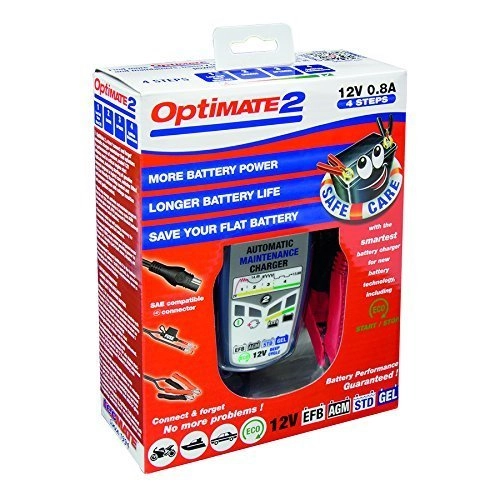
5.2. Lithium iron phosphate battery (LiFePo4): Jubatec LiFePo4 battery plus charger Optima 2 TM470
As a supplier of advanced battery technology, the company JuBaTec (Just Battery Technic) has a wide range of lithium-based models in its program: from the 200 Ah model for the drive sector to common power supplies for small devices such as smartphones. Like many other manufacturers, JuBaTec has its products manufactured in China, but underlines its claim to quality and application safety with a three-year warranty period.
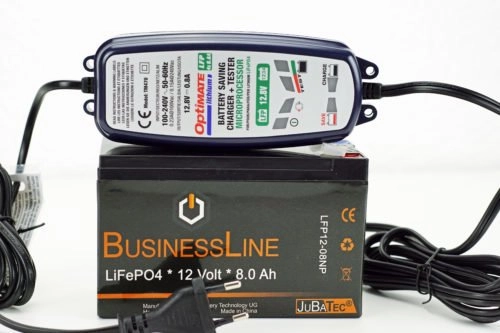
a) Battery features
The 12 V lithium iron phosphate (LiFePo4) battery presented here is ideally suited for use with fish finders in mobile operation.
It comes in a standard housing 151 x 95 x 65 mm
with 6.3 mm Feston connector,
weighs a meager 1.164 kg and
has a nominal capacity of 8 Ah.
Due to the higher energy density (1024 Wh) of the lithium technology, the available power corresponds approximately to a 12 – 16 Ah lead-acid battery. For fish finder operation, this is enough for one to two days of fishing with a 7-inch model. The visual inspection attests to first-class workmanship and a clean finish. Unfortunately, the sticker with the type logo “Businessline” on the battery’s broadside only provides information about the already known battery type. All other information about the technical data, such as
end-of-charge voltage,
end-of-discharge voltage,
max. charging current
must be taken from the enclosed, English-language data sheet. A sticker on the battery would have been better here, because such data sheets often get lost. Information about the safe use of the lithium technology is also only found on the data sheet.
b) Battery assembly
As technical components, we find four LiFePo cells in the Jubatec battery, each of which supplies 3.3 V voltage. This corresponds to a nominal voltage of 4 x 3.3 V = 13.2 V. Freshly charged, the meter sometimes shows 13.65 V under load. However, the nominal range of around 13.2 V is reached after a short time (30-45 minutes depending on the current draw). The battery also has a battery management system (BMS), which reliably prevents deep discharge, overcharging or short circuits.
The BMS also terminates the charging process in good time when the end-of-discharge voltage is reached – and that’s not all. During charging, it also balances the charge of the individual cells by means of a passive balancing circuit. Under optimal conditions (only a maximum of 80 % discharge, favorable operating temperatures, proper storage, etc.), 2000-5000 charge cycles are achieved, according to the supplier. The more carefully the battery is cared for, the more. Optimal battery care would also include an optimally adapted charger – but the manufacturer unfortunately does not have such a charger in its lineup.
c) Runtime test
For our practical test, we used an Optimate 2 TM470 (14.4 V / 0.8 A) charger in combination with the JuBaTec battery. This is specially adapted to LiFePo4 batteries and also has – as we will see – some other interesting features.
In the practical test, we wanted to know how long the battery actually lasts in practical use. For this purpose, we included it in the test setup and performed the run test twice at intervals of several days. At the start of the test run, it was in a fresh fully charged state each time. The ambient temperature was 20 – 23 °C during the test phase.
In purely mathematical terms, the runtime should be around 10.5 hours with a power consumption of 0.732 A (as we had determined as typical for 7-inch fish finders). As usual, we used the Peukert formula for the calculation. We set the Peukert exponent to k = 1.05 (lithium). However, the results of our runtime test exceeded our calculations – because we achieved an average runtime of the power consumer of around 12 h in each case. Considering the fact that a battery only reaches its full performance after about 5 – 10 charging cycles, these were very good results.
d) Findings from the runtime test
The end-of-charge voltage for this battery type is 14.4 V – this corresponds to a voltage of 3.6 V for each of the four cells. For stable and new cells, this increased voltage is maintained for a while until it drops back to the nominal value of 3.3 V.
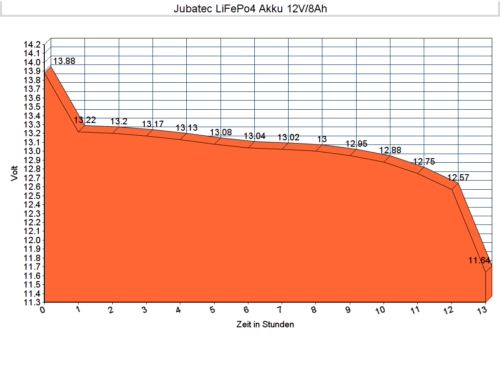
In the diagram, we can see that the battery initially still had 13.88 V voltage under load, which dropped to the nominal value of 13.2 V after one hour. In the following hours, we observed a very flat dropping curve with an average drop of 0.03 V per hour. From the ninth hour, the voltage dropped more sharply and finally collapsed after the 12 h. In fact, the battery was cut off just before the thirteenth hour.
Theoretically, a runtime of 12 hours would be possible, but the battery discharges very quickly with a clear voltage drop from the 10th hour. Due to this circumstance, it can be assumed that the 80 % discharge limit is already reached here. To protect the battery, it therefore makes sense to set a mark at 10.8 V (i.e. at approx. 10.5 hours of use) and not to discharge it any further. In practice, you can set this value in the depth sounder to be warned. Careful handling of the mobile power supply would thus be ensured – as would its permanent use.
We note: The Jubatech LiFePo4 battery achieved a maximum runtime of 12 h with its capacity of 8 Ah in the test constellation (0.732 A power consumption). This can also be used in exceptional cases. However, a usage time of 10.5 h should not be exceeded if possible for careful handling and to increase the battery life.
e) Conclusion
The Jubatec Business LiFePo4 battery 12 V/Ah met our expectations in all areas. Neglecting small deductions for the lack of specifications on technical data and safety on the case pleased
- the processing,
- the visual appearance,
- the technical equipment,
- the suitability for use in a wide temperature range (-20 to +60 °C),
- the extended warranty period
- the low weight
- as well as (what is ultimately most important) the optimally adjusted runtime at the consumer.
The battery can therefore be recommended without restriction for use with a fish finder. Even with a service life of only 1500 charging cycles, the higher purchase price compared to an 8 Ah lead type pays off due to the savings in charging costs as well as the performance in use.
-

The Ultimate Fish Finder Guide
Download 40 pages for free now
Reviews ( 17 )
- Rated 5 out of 5
Raphaël G
Very effective. - Rated 5 out of 5
Vladimir M
The book describes the fish finder physics and builds up your understanding of how it actually works. I have yet to apply this knowledge with my Humminbird, but having that much of theory is extremely helpful in understanding and processing the sonar output. - Rated 5 out of 5
NICHOLAS JOHN REECY
The Deeper Guide was just what I was looking for. YouTube is full of reviews of the sonar but little in the way of education. I highly recommend for those wanting to better understand their Deeper sonar. - Rated 5 out of 5
Henrik
I am a beginner when it comes to fishing with fish finders. For me, the book has been very informative to judge the displays on the fish finder “realistically” and to recognize what limits there are when searching for fish with the fish finder. Now I know when I have to use my regular sonar and when I have to use my ClearVü or which settings I should apply to the device at which spot. I was impressed by the many illustrations, especially for understanding the functions. - Rated 5 out of 5
Dr. Manfred Marx
Very well written, so that it is understandable even for amateurs and structured concisely. - Rated 5 out of 5
Andreas Witz
An excellent book for learning about fish finders. - Rated 5 out of 5
AK
The ultimate fish finder guide is a beneficial introduction. I am excited to put into practice what I have learned. - Rated 5 out of 5
Lübbe Wolfgang
A well-written problem solver. - Rated 5 out of 5
Kalksee
The book is unmatched for understanding how a sonar/fish finder works. I was a fish arch hunter, and I suspect my fishing tactics will change. The book has clear writing, and you understand you understand a lot the first time you read it. I can only recommend it to anyone interested in technology. Thank you for this fantastic book! Thoralf - Rated 5 out of 5
Enrico Indelicato
I had absolutely no idea about fish finders. Since I read the book, I had a real Aha experience! For me, as a beginner, very detailed and uncomplicated explained. I can only recommend it! Best regards Enrico - Rated 5 out of 5
Udo
Reading this book has suddenly made my fish finders much more valuable to me! I realized that I made typical mistakes in interpreting the images, which I will now avoid. The authors use clear, understandable language and also explain the mathematical-physical basics very well. The fact that there is no advertising for one or another fish finder manufacturer has increased its credibility. At the same time, you get a solid impression of what is feasible today on this subject – and the “advertisements” of the manufacturers also helped. The book is ABSOLUTELY to recommend, because what good is an expensive fish finder if you too often draw the wrong conclusions from the obtained illustrations? In this respect, the money for the book is very well invested. - Rated 5 out of 5
Josef Weiss
I had to wait a long time for such great explanations. Thank you. - Rated 5 out of 5
Peter
It is a well-described, scientifically sound book highly recommended to anyone who wants to advance and doesn’t already know everything. - Rated 5 out of 5
Holger Just
Ich angle seit Jahren mit Echolot. Aber erstens bleibt man da irgendwann auf einer bestimmten Verständnisstufe stehen, diese konnte ich durch dieses Buch um einiges anheben. Als zweiten Aspekt mußte ich nach dem Lesen dieses Buches erkennen, dass ich durch “gefährliches Halbwissen” jahrelang Fehlinterpretationen hatte bzw. die Möglichkeiten meines Lotes nie richtig ausgenutzt habe. Also mein Fazit : Sehr empfehlenswert, die komplexen Zusammenhänge sind verständlich beschrieben. Das Buch ist ideal geeignet um sich in der angelfreien Zeit wertvolles Wissen für die folgende Saison anzueignen und beim Thema Echolot wieder uptodate zu sein. - Rated 5 out of 5
Matthias Wappler
Sehr gut!! - Rated 5 out of 5
M. Hermanns
Wer dieses Buch nicht liest, ist selber Schuld! Kein Vortrag, kein Presseartikel oder Bericht, Nein sogar keine Online-Schulung oder gar ein 365 Tage Support, vermittelt so viele essentielle Kenntnisse, wie dieses Buch. Nach zwei drei bebilderten Erklärungen wird dir klar, das ohne dieses Wissen, die Gewinn bringende Nutzung eines Echolotes gar nicht möglich ist. Beziehungsweise dir wird klar das du dein Echolot bisher sehr ineffizient genutzt hast und das dir eine Menge verborgen geblieben ist. Ich habe nach dem ersten gleich drei weitere Exemplare gekauft und drei guten Angelfreunden eine Anerkennung für unsere Freundschaft mit diesem Buch gemacht. Alle drei verfügen über 30 Jahre Bootsangelerfahrung und alle drei waren ebenfalls begeistert, jeder konnte sein Wissen deutlich erweitern. Deshalb freue ich mich auch so sehr auf das Zanderbuch welches hoffentlich noch vor dem Wochenende bei mir ist. Liebe Grüße weiter so. dermarc - Rated 5 out of 5
TACKLEFEVER
Das Buch beginnt mit rund 15 Seiten Technik Erläuterung bei der versierte Echolot Nutzer, zu denen ich mich zähle, vielleicht geneigt sind weiter zu blättern weil sie vieles schon wissen und Anfänger weiter blättern möchten weil es zu trocken scheint. Aber etwas Basiswissen gehört einfach dazu. Selbst wenn man als Anfänger bei der Basis Theorie weiter blättern will, sobald es um Chirp geht sollte “jeder” genauer hinschauen 😉 es lohnt sich. Und auch für mich fand ich noch ein zwei kleine Dinge die ich nicht wusste oder noch nicht im Zusammenhang mit anderem sah. Die weiteren Abschnitte (bis Kap. 3) befassen sich mit den verschiedenen Techniken der Geber, Bildschirme, oder dem Smartphone, dem Tablet als Anzeigemedium. Was mir bis dahin sehr positiv auffiel waren die “MERKE-Boxen”, kleine übersichtliche Passagen welche Kerninformationen des zuvor vermittelten Wissen zusammenfassend hervorheben. Auch wenn man nicht alles komplett verstanden hat, hilft diese leicht verständliche Zusammenfassung des voraus gegangenen Inhalts sehr. Kapitel 4 geht auf 2D, Down-Imaging, Side-Scan-Sonar ein, dabei ohne zu konkret auf einen Hersteller abzustellen was ich ebenfalls sehr positiv fand. Dem Angler wird der praktische Einsatz und das Verstehen dessen was man auf dem Echolot sieht erläutert. Fragen wie z.B.: Wo befindet sich der Fisch genau? Was ist eine Fischsichel? Wie setze ich das Echolot beim Vertikalangeln ein? Warum gibt es Vertiefungen obwohl man keine sieht und umgekehrt? Wie erkenne ich die Bodenbeschaffenheit? Fragen zur richtigen Deutung der Unterwasserstruktur, dem optimalen Bildlauf- und Boots- Geschwindigkeit, der Sprungschicht, usw. werden auch beantwortet. Würde ich alles aufzählen würde es hier zu weit führen. Es folgen noch kurze Infos zur Multibeam Technik und ein Kapitel “Die 3D Show mit Garmins Panoptix”. Hier wurde für mich zu wenig Wissen vermittelt, nur auf einen Herstellers gezeigt und nicht auf ähnliche Funktionen oder Techniken anderer Hersteller Bezug genommen. Ich hoffe es kommt in der nächsten Auflage mehr zu dem Thema. Am Ende des Buches kommen Infos rund um konkrete Einstellungen am Echolot. Hier wird einer der wichtigsten Punkte überhaupt behandelt und dies praxisnah und hilfreich. Aller spätestens jetzt lohnt sich das Buch für alle Neueinsteiger. Viel einfacher und kompakter geht es kaum. Ein paar wichtige zuvor besprochene Punkte zu Einstellungen bei bestimmten Echolot Funktionen werden erläutert und mit Checklisten im Kapitel “Die effektivsten Einstellungen beim Echolot auf einen Blick” zusammen gefasst. Hier lohnt es sich für Anfänger die Seiten besonders aufmerksam zu lesen und vielleicht als Kopie mit auf Boot zu nehmen. Damit fällt der Kampf mit den gefühlten tausenden von Einstellungen am Echolot auf dem Wasser leichter. Es klingt fast zu schön um wahr zu sein, aber tatsächlich scheint mir das Buch für Anfänger und Fortgeschrittene Anwender gleichermaßen gut geeignet zu sein. Manchmal suchte ich mehr Hintergrundwissen, weil der im Prinzip sehr gute Ansatz es für Anfänger leicht verständlich zu halten manche Herstellerabhängige Feinheiten außer Acht lässt. Das Buch hat eine gute Gliederung, fasst vieles kompakt zusammen und geht bei wichtigen Punkten auch meist für Fortgeschrittene etwas in die Tiefe. So richtet sich das Buch meiner Meinung nach nicht an wissenschaftliche Anwender, sondern an Echolot Neulinge indem es auch viele Basis Fragen beantwortet ebenso auch an Fortgeschrittene indem es auf diverse Punkte tiefer eingeht. Wenn ich den Sinn des Buches in einem Satz beschreiben sollte, dann wäre dies: Echolottechnik für Anfänger interessant und verständlich erklären und dabei auch ein wenig tieferes Wissen für alle zu vermitteln. Mir ist Stand Juni 2017 kein anderes Buch bekannt das diesen Ansatz so konsequent verfolgt. Ich hoffe ihr habt so viel Spaß beim lesen wie ich. Luke www.tacklefever.de
f) Charger Tecmate Optimate LiFePo4 14.4 V / 0.8 Ah
In specialized stores, the buyer of a LiFePo4 battery is sometimes offered chargers that were designed for lead batteries. In terms of price, even those that come from the low-cost sector. It is true that the charging procedure for lead batteries according to the IU regulations corresponds in principle to the CC/CV charging rhythm of a lithium iron phosphate battery. Nevertheless, there are countable differences, which are mainly to be found in
- the end-of-charge voltage,
- of the attached float charge and
- the voltage modulation
are the reasons for this. The extent to which such a (not optimally fitting) charger is beneficial for the safety and service life of a lithium-based battery cannot be determined for each individual case – as a user, however, you are on the safe side if you use a model specially adapted for your depth sounder battery. Of course, this costs a few euros more, but is a more than well invested.
The Belgian supplier TecMate specializes in high-quality chargers and with these in the two-wheeler as well as car owner community with its Optimate chargers a well-known (and appreciated) brand. For our Jubatec LiFepo4 and comparable battery models, the Tecmate Optimate TM470 is an optimal addition. The eight-stage charger has all the prerequisites to gently and efficiently charge and maintain this battery type in particular. Even very shallowly discharged batteries (cell voltage close to deep discharge) can be saved (Safe function). For this purpose, the charger can reset the built-in BMS, which could prevent recharging. A multi-stage cycle (multi-stage charging process with initially very low values) further prevents cell damage during charging at low cell voltage. In the charging program itself, cell balancing of the BMS is supported.
In the subsequent test and maintenance program, the entire battery – including each individual cell – is checked for proper functioning. If the state of charge of an individual cell does not meet the specifications, it is recharged if necessary. The Optimate TM470 is therefore not only a simple charger, but also a tester and maintainer for the battery. A battery butler, if you will, which not only charges the battery, but also protects and maintains it. The manufacturer promises itself with it more efficiency with the employment and a longer life span (more charge cycles). In its advertising, the provider propagates: “Connect and forget. No more problems with your battery”.
Well, as we all know, advertising claims and practical experience can be quite different. However, our experience with the Optimate TM470 does not give us any reason to doubt its optimal function and usability. We even tested the battery rescue function and the multi-stage charging and control process during our test – all without restrictions and malfunctions. The achievable state of charge also corresponded to the expected full charge. The rather low charging current of 0.8 A (measured 0.762 A) naturally requires a certain amount of time in the charging process. This can be additionally prolonged if charging from a very low state of charge. The Optimate TM470 only gets warm to the touch during the entire charging process, works silently and comes with various connection options. Some of these are even equipped with a charging fuse.
g) Conclusion
The TecMate Optimate TM470 charger can be recommended without reservation for charging and maintaining a LiFePo4 battery. The automatic functions adjust the charging process unerringly to the respective battery condition – and especially to the common nominal voltage of LiFePo4 models with 12.8 V – 13.2 V (of all four cells). In addition, test and maintenance functions desirably safeguard the well-being of the battery. For a high-quality charger, the purchase price is reasonable. You should not settle for less to secure the previously made investment in the energy storage to be supplied.
5.3. Lithium-ion battery (Li-ION): Rebelcell plus charger Rebelcell
Wow, who would have thought that! An 18 Ah power pack in a small standard housing of only 151 x 95 x 65 mm. Li-Ion technology makes this possible with a three cell pack. This energy hammer is offered by Dutch supplier Rebelcell, based in the beautiful coastal resort of Katwijk.
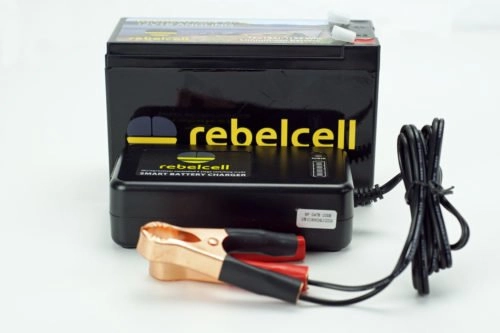
The still young company develops, produces and sells lithium-ion batteries and their accessories exclusively for the fishing market. The developers must not only be well rested (as if they were sitting in a deck chair on the beach) – they also know exactly what anglers dream of. The energy carrier should be light and at the same time bring power that can also be enough for large fish finders and several days. Exactly this approach has succeeded convincingly with the present 12 V / 18 Ah device. With a cell voltage of 3.6 – 3.7 V in the single cell, this results in a nominal voltage of only 11.1 V. In use, however, it shows that the battery can hold a range of 12.5 – 9 V over a long period of time in the discharge process. Thus, it rightly belongs to the 12 V class: Especially since the accepted tolerance range for 12 V devices is even significantly larger.
a) Properties and data
The battery weighs a whole 1.17 kg (measured) – and about as much as the tested LiFePo4 model from JuBaTec: Which, however, only has a capacity of 8 Ah. An 18 Ah lead-acid model, such as the Effekta AGM 12 V / 18 Ah, weighs in at a hefty 5.7 kg. About five times the weight. This corresponds to a mass saving of about 80 %.
The Rebelcell fish finder battery can be used in the usual range of -20 °C to +50 °C. However, it works best at a temperature of 25 °C. Besides its flyweight, this model brings all the advantages of lithium technology, which we have already described in detail elsewhere. In view of the sensitivity of this technology to incorrect handling, the battery is of course
adequately protected with an integrated protective circuit (BMS).
An integrated cell balancer is also available
as well as a discharge current fuse (max. limitation of the discharge current) and
the protection against overcharge or deep discharge.
The workmanship is impeccable. All the necessary information, including the technical data and the safety note, is printed on it. If we assume a very realistic service life of 10 years and assume operating cost savings of around 50 % per year, the purchase price can already be amortized in the medium term.
Runtime test
We were curious about the runtime test. Theoretically, the runtime should be well above the 20 h mark. The Peukert equation failed to calculate this because the i20 = 0.9 A value was greater than the consumption current of 0.732 A. Understandably, there can be no direct comparison to the other two test subjects because of the glaring differences in performance, but it was exciting to know how much operating time should be available with this battery on a 7-inch fish finder model. We simply made an estimate with the factor 0.9/0.732×20 h. With this, we arrived at a runtime of around 25 hours. We were a bit surprised that it ended up being 30 hours in the practical test.
For runtime measurement
The runtime measurements were performed in two stages because we did not want to run the test setup overnight (and without supervision) for safety reasons. The first stage was finished after 16 h at a battery voltage of 10.89 V and continued the next day with the starting value of 10.87 V.
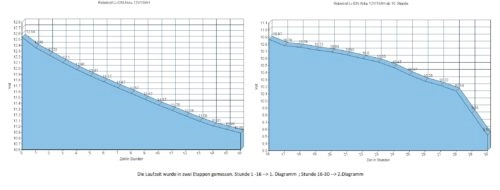
The end-of-charge voltage was 12.6 V or 4.2 V per cell. We started our test promptly (only a few hours) after the full charge was completed. The initial value of 12.54 V under load was therefore only minimally below the final voltage and demonstrated impressively how well the cells can hold the voltage. In contrast to the LiFePo4 competitor from Jubatec, the voltage curve dropped relatively steeply under load – but did so very evenly at 0.1 V per hour for the first measurement range of 16 h.
The second measurement block (from the 16th hour on) was no longer quite so homogeneous. There was a flat area with smaller differences between the 17th and 22nd hour. From then on it went down again a bit more briskly, but then slowed down again from the 25th hour on again. From the 28th hour, the voltage dropped steeply, but continued to supply the consumer without any problems. After the 30th hour, we aborted the test to prevent the BMS from shutting down.
We note: The Rebelcell Li-ION battery achieved a runtime of 30 h in our test with a 0.732 A power consumer. This can also be fully used with this battery type in case of doubt. However, if you want to preserve it permanently to get the optimal number of cycles, you would be well advised to recharge it earlier (after the 28th hour) before the voltage drops significantly.
Conclusion:
The Rebelcell Li-Ion battery 12 V / 18 Ah showed itself from its best side all around – in some points it even exceeded our expectations. The supplier has done everything to develop a safe and highly efficient battery that provides more than enough energy for the angler’s areas of application.
- With a very low weight of about 1 kg,
- the easy handling and
- the robust structure
there is currently nothing comparable that can offer similar energy density and features. The price of over 200 € (including charger) is a bit steep at first glance, but it is put into perspective by its outstanding features when you take a closer look. It also pays off in the long run due to various savings potentials.
b) Charger Rebelcell 12.6V/4A
The included charger is perfectly adapted to the three-cell battery. With a end-of-charge voltage of 4.2 V per cell, the necessary values are cleanly maintained. The full charge was almost perfect: A sign that the limits are obviously exhausted. Unfortunately, the charger heats up considerably during operation. We measured up to 76 °C on the surface after one hour. This is not harmful, but it shows that the components in the charger have not been carefully tuned. What we did not like at all is the insufficient insulation of the alligator clips.
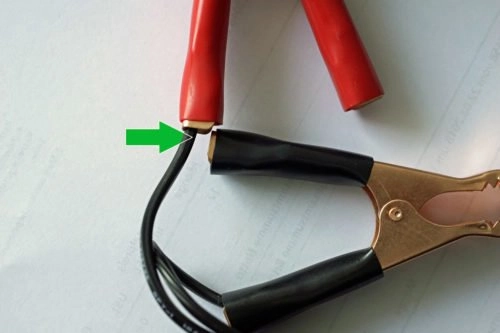
Even if the clamps are only slightly sloppy, contact in the upper grip area cannot be ruled out, which would inevitably lead to a short circuit. There is a need for improvement here. In fact, however, there is basically nothing to criticize about the charging procedure – nor the charging result. Processing the battery directly with a 4 A charge current in a flat state of charge would not be recommended, though. Among other things, this would damage the cells and shorten the battery life.
Neither the charger itself, nor the description, tells us whether the device can adjust the charging current. According to our measurements, however, only a simple three-stage charging process is performed. Considering the unit price of 26.50 €, we wouldn’t expect more. Here we have a simple standard charger without frills, which does its work heatedly, but neatly in the result. You cannot and should not expect more at this price.
To what extent it can meet the battery’s care needs across all requirements is speculative, but not necessarily probable. Nevertheless, you cannot blame the provider for wanting to keep the overall price reasonably in line in conjunction with its excellent battery. If you are still looking for alternatives to this charger that meet higher demands, you will have a hard time finding something suitable. The market is quite small for dedicated 3S chargers. The only one we have found is a Mascot 2241 Li 3S. In the end, however, this has no more to offer technically than the Rebelcell model.
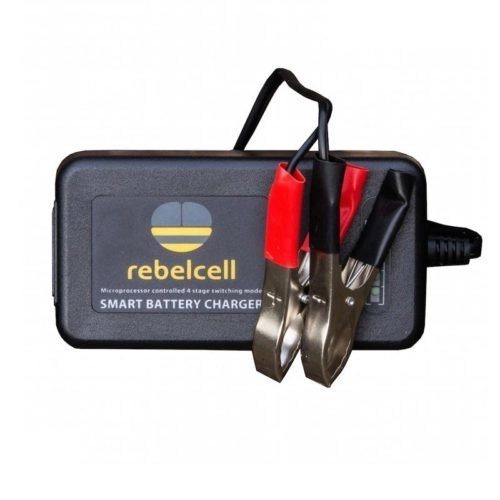
Overall conclusion fish finder battery test:
Modern battery technology and lithium belong together. Batteries on this basis are powerful and very convenient – both in handling and care. The energy reserves are significantly higher than those of comparably strong lead-acid batteries. An immense advantage is the weight saving: A big plus with all necessities to have to transport something. For mobile fish finders, a lithium battery is therefore almost a must in order to satisfy the energy hunger of the latest sonar technology without having to accept disadvantages in the size and mass of the energy carrier.
However, one has to differentiate between the individual variants of lithium battery technology. Lithium iron phosphate types (LiFePo4) are considered to be very safe and serviceable, but bring a little more mass (weight, volume) and a lower energy density than the pure Li-Ion variants. The latter mark the non-plus-ultra of modern power supply for our fishing area – but in return they take their toll on the budget.
However, the question must be allowed whether it makes much sense to spend a lot of money on the latest fish finder and at the same time want to save every cent when choosing the electricity supplier. Ultimately, however, everyone must decide for themselves.
-

The Ultimate Fish Finder Guide
Download 40 pages for free now
Reviews ( 17 )
- Rated 5 out of 5
Raphaël G
Very effective. - Rated 5 out of 5
Vladimir M
The book describes the fish finder physics and builds up your understanding of how it actually works. I have yet to apply this knowledge with my Humminbird, but having that much of theory is extremely helpful in understanding and processing the sonar output. - Rated 5 out of 5
NICHOLAS JOHN REECY
The Deeper Guide was just what I was looking for. YouTube is full of reviews of the sonar but little in the way of education. I highly recommend for those wanting to better understand their Deeper sonar. - Rated 5 out of 5
Henrik
I am a beginner when it comes to fishing with fish finders. For me, the book has been very informative to judge the displays on the fish finder “realistically” and to recognize what limits there are when searching for fish with the fish finder. Now I know when I have to use my regular sonar and when I have to use my ClearVü or which settings I should apply to the device at which spot. I was impressed by the many illustrations, especially for understanding the functions. - Rated 5 out of 5
Dr. Manfred Marx
Very well written, so that it is understandable even for amateurs and structured concisely. - Rated 5 out of 5
Andreas Witz
An excellent book for learning about fish finders. - Rated 5 out of 5
AK
The ultimate fish finder guide is a beneficial introduction. I am excited to put into practice what I have learned. - Rated 5 out of 5
Lübbe Wolfgang
A well-written problem solver. - Rated 5 out of 5
Kalksee
The book is unmatched for understanding how a sonar/fish finder works. I was a fish arch hunter, and I suspect my fishing tactics will change. The book has clear writing, and you understand you understand a lot the first time you read it. I can only recommend it to anyone interested in technology. Thank you for this fantastic book! Thoralf - Rated 5 out of 5
Enrico Indelicato
I had absolutely no idea about fish finders. Since I read the book, I had a real Aha experience! For me, as a beginner, very detailed and uncomplicated explained. I can only recommend it! Best regards Enrico - Rated 5 out of 5
Udo
Reading this book has suddenly made my fish finders much more valuable to me! I realized that I made typical mistakes in interpreting the images, which I will now avoid. The authors use clear, understandable language and also explain the mathematical-physical basics very well. The fact that there is no advertising for one or another fish finder manufacturer has increased its credibility. At the same time, you get a solid impression of what is feasible today on this subject – and the “advertisements” of the manufacturers also helped. The book is ABSOLUTELY to recommend, because what good is an expensive fish finder if you too often draw the wrong conclusions from the obtained illustrations? In this respect, the money for the book is very well invested. - Rated 5 out of 5
Josef Weiss
I had to wait a long time for such great explanations. Thank you. - Rated 5 out of 5
Peter
It is a well-described, scientifically sound book highly recommended to anyone who wants to advance and doesn’t already know everything. - Rated 5 out of 5
Holger Just
Ich angle seit Jahren mit Echolot. Aber erstens bleibt man da irgendwann auf einer bestimmten Verständnisstufe stehen, diese konnte ich durch dieses Buch um einiges anheben. Als zweiten Aspekt mußte ich nach dem Lesen dieses Buches erkennen, dass ich durch “gefährliches Halbwissen” jahrelang Fehlinterpretationen hatte bzw. die Möglichkeiten meines Lotes nie richtig ausgenutzt habe. Also mein Fazit : Sehr empfehlenswert, die komplexen Zusammenhänge sind verständlich beschrieben. Das Buch ist ideal geeignet um sich in der angelfreien Zeit wertvolles Wissen für die folgende Saison anzueignen und beim Thema Echolot wieder uptodate zu sein. - Rated 5 out of 5
Matthias Wappler
Sehr gut!! - Rated 5 out of 5
M. Hermanns
Wer dieses Buch nicht liest, ist selber Schuld! Kein Vortrag, kein Presseartikel oder Bericht, Nein sogar keine Online-Schulung oder gar ein 365 Tage Support, vermittelt so viele essentielle Kenntnisse, wie dieses Buch. Nach zwei drei bebilderten Erklärungen wird dir klar, das ohne dieses Wissen, die Gewinn bringende Nutzung eines Echolotes gar nicht möglich ist. Beziehungsweise dir wird klar das du dein Echolot bisher sehr ineffizient genutzt hast und das dir eine Menge verborgen geblieben ist. Ich habe nach dem ersten gleich drei weitere Exemplare gekauft und drei guten Angelfreunden eine Anerkennung für unsere Freundschaft mit diesem Buch gemacht. Alle drei verfügen über 30 Jahre Bootsangelerfahrung und alle drei waren ebenfalls begeistert, jeder konnte sein Wissen deutlich erweitern. Deshalb freue ich mich auch so sehr auf das Zanderbuch welches hoffentlich noch vor dem Wochenende bei mir ist. Liebe Grüße weiter so. dermarc - Rated 5 out of 5
TACKLEFEVER
Das Buch beginnt mit rund 15 Seiten Technik Erläuterung bei der versierte Echolot Nutzer, zu denen ich mich zähle, vielleicht geneigt sind weiter zu blättern weil sie vieles schon wissen und Anfänger weiter blättern möchten weil es zu trocken scheint. Aber etwas Basiswissen gehört einfach dazu. Selbst wenn man als Anfänger bei der Basis Theorie weiter blättern will, sobald es um Chirp geht sollte “jeder” genauer hinschauen 😉 es lohnt sich. Und auch für mich fand ich noch ein zwei kleine Dinge die ich nicht wusste oder noch nicht im Zusammenhang mit anderem sah. Die weiteren Abschnitte (bis Kap. 3) befassen sich mit den verschiedenen Techniken der Geber, Bildschirme, oder dem Smartphone, dem Tablet als Anzeigemedium. Was mir bis dahin sehr positiv auffiel waren die “MERKE-Boxen”, kleine übersichtliche Passagen welche Kerninformationen des zuvor vermittelten Wissen zusammenfassend hervorheben. Auch wenn man nicht alles komplett verstanden hat, hilft diese leicht verständliche Zusammenfassung des voraus gegangenen Inhalts sehr. Kapitel 4 geht auf 2D, Down-Imaging, Side-Scan-Sonar ein, dabei ohne zu konkret auf einen Hersteller abzustellen was ich ebenfalls sehr positiv fand. Dem Angler wird der praktische Einsatz und das Verstehen dessen was man auf dem Echolot sieht erläutert. Fragen wie z.B.: Wo befindet sich der Fisch genau? Was ist eine Fischsichel? Wie setze ich das Echolot beim Vertikalangeln ein? Warum gibt es Vertiefungen obwohl man keine sieht und umgekehrt? Wie erkenne ich die Bodenbeschaffenheit? Fragen zur richtigen Deutung der Unterwasserstruktur, dem optimalen Bildlauf- und Boots- Geschwindigkeit, der Sprungschicht, usw. werden auch beantwortet. Würde ich alles aufzählen würde es hier zu weit führen. Es folgen noch kurze Infos zur Multibeam Technik und ein Kapitel “Die 3D Show mit Garmins Panoptix”. Hier wurde für mich zu wenig Wissen vermittelt, nur auf einen Herstellers gezeigt und nicht auf ähnliche Funktionen oder Techniken anderer Hersteller Bezug genommen. Ich hoffe es kommt in der nächsten Auflage mehr zu dem Thema. Am Ende des Buches kommen Infos rund um konkrete Einstellungen am Echolot. Hier wird einer der wichtigsten Punkte überhaupt behandelt und dies praxisnah und hilfreich. Aller spätestens jetzt lohnt sich das Buch für alle Neueinsteiger. Viel einfacher und kompakter geht es kaum. Ein paar wichtige zuvor besprochene Punkte zu Einstellungen bei bestimmten Echolot Funktionen werden erläutert und mit Checklisten im Kapitel “Die effektivsten Einstellungen beim Echolot auf einen Blick” zusammen gefasst. Hier lohnt es sich für Anfänger die Seiten besonders aufmerksam zu lesen und vielleicht als Kopie mit auf Boot zu nehmen. Damit fällt der Kampf mit den gefühlten tausenden von Einstellungen am Echolot auf dem Wasser leichter. Es klingt fast zu schön um wahr zu sein, aber tatsächlich scheint mir das Buch für Anfänger und Fortgeschrittene Anwender gleichermaßen gut geeignet zu sein. Manchmal suchte ich mehr Hintergrundwissen, weil der im Prinzip sehr gute Ansatz es für Anfänger leicht verständlich zu halten manche Herstellerabhängige Feinheiten außer Acht lässt. Das Buch hat eine gute Gliederung, fasst vieles kompakt zusammen und geht bei wichtigen Punkten auch meist für Fortgeschrittene etwas in die Tiefe. So richtet sich das Buch meiner Meinung nach nicht an wissenschaftliche Anwender, sondern an Echolot Neulinge indem es auch viele Basis Fragen beantwortet ebenso auch an Fortgeschrittene indem es auf diverse Punkte tiefer eingeht. Wenn ich den Sinn des Buches in einem Satz beschreiben sollte, dann wäre dies: Echolottechnik für Anfänger interessant und verständlich erklären und dabei auch ein wenig tieferes Wissen für alle zu vermitteln. Mir ist Stand Juni 2017 kein anderes Buch bekannt das diesen Ansatz so konsequent verfolgt. Ich hoffe ihr habt so viel Spaß beim lesen wie ich. Luke www.tacklefever.de
This brings us to the end of our extensive article about “Depth finder batteries: What battery to use for a fish finder?”. If you are still unsure about which one – or even which fish sonar – to buy, you can a have a look at the other fish finder reviews in our extensive fish finder test (including the newest models of all important fish finder manufacturers like Garmin, Lowrance, Humminbird or Raymarine) or write us a short message. Have fun on your next angling trip and “Petri Heil” – Jens and Martin.
Could you take 1 Click to share your experiences?
We will be forever grateful. With your rating we can improve.
average rating 4.8 / 5. Number of ratings: 4
Be the first to rate this post!

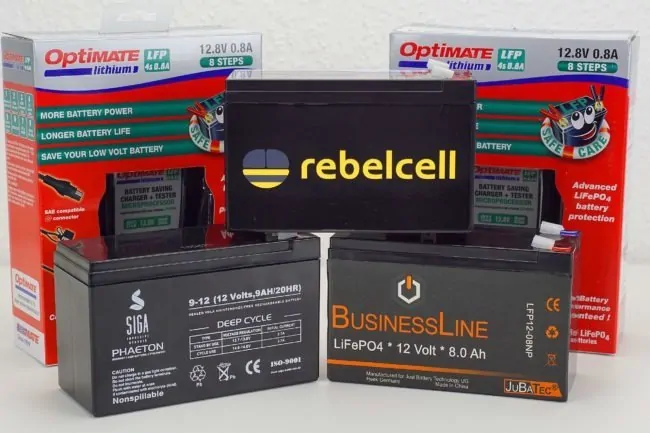
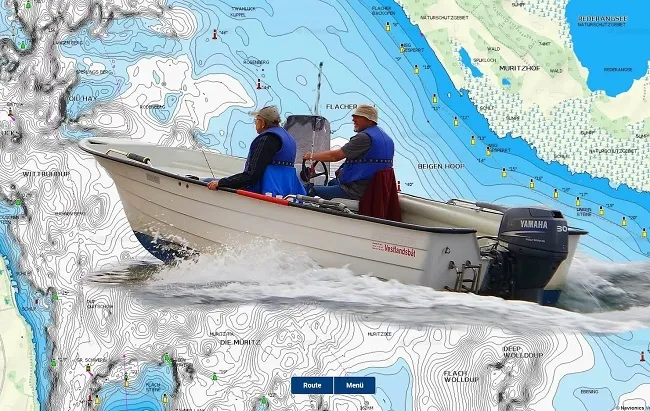

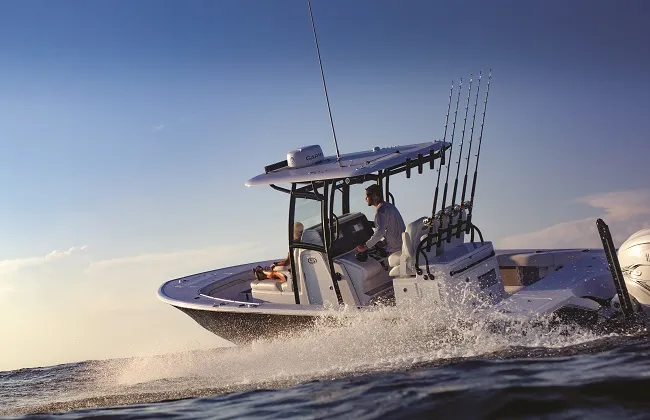



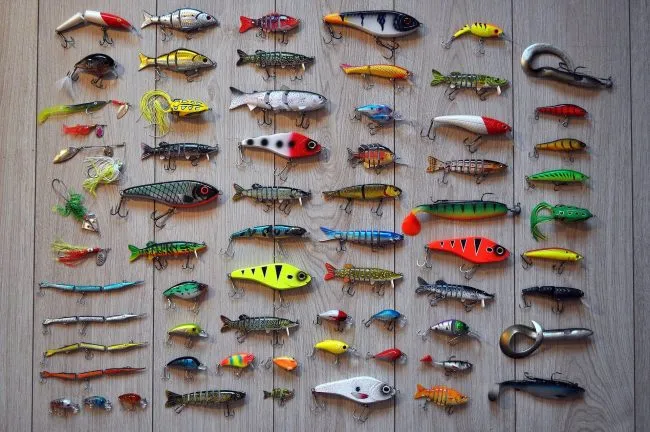
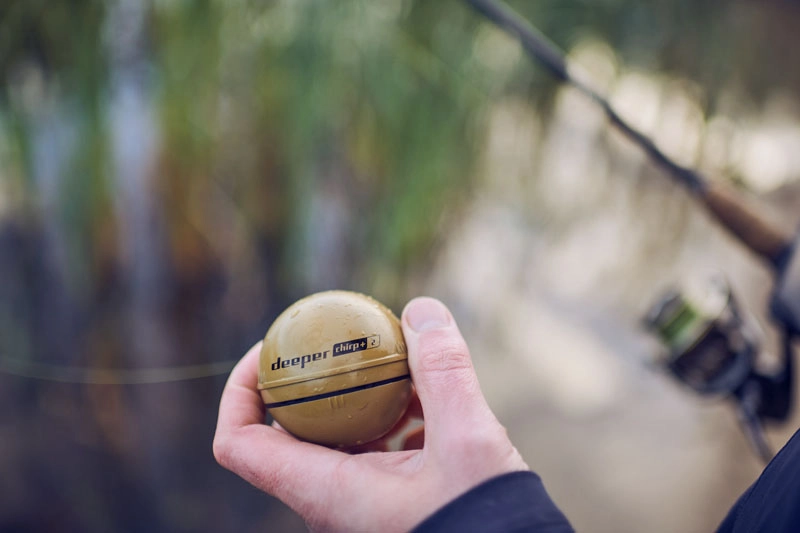
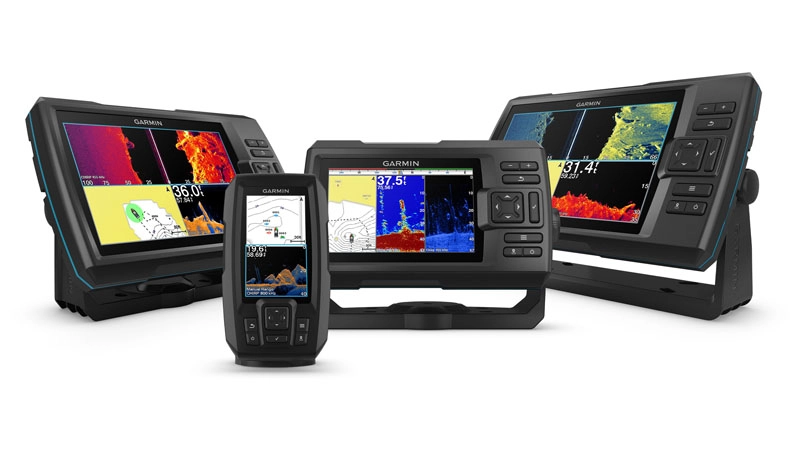


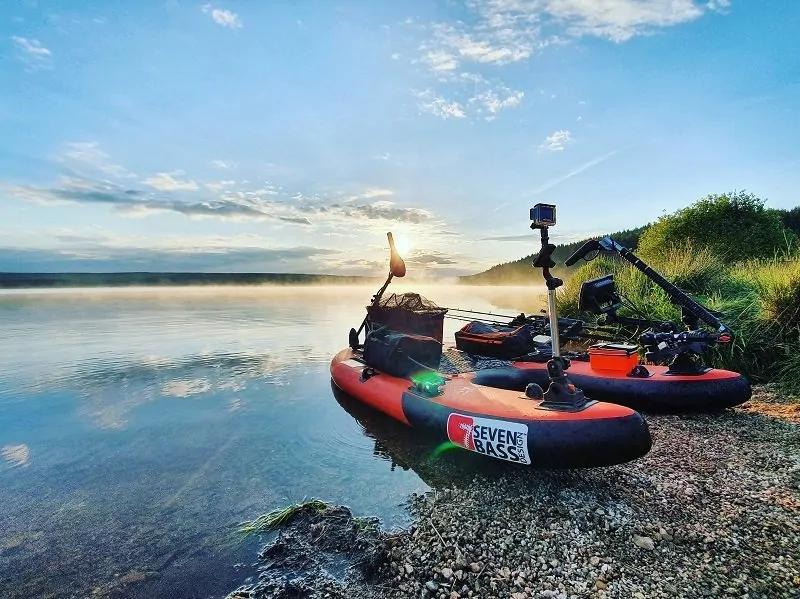

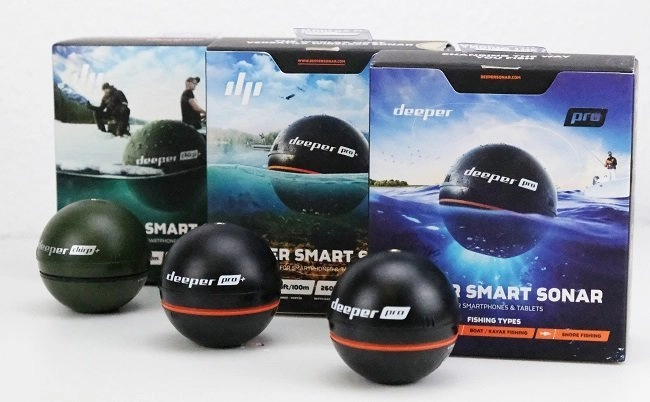

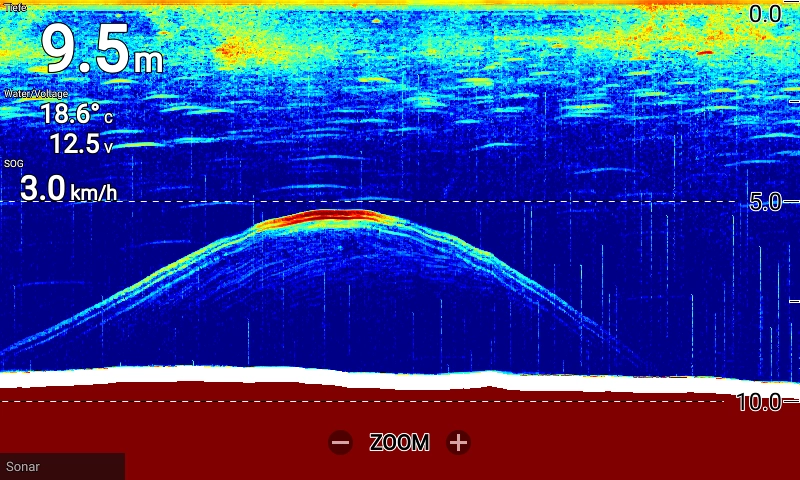
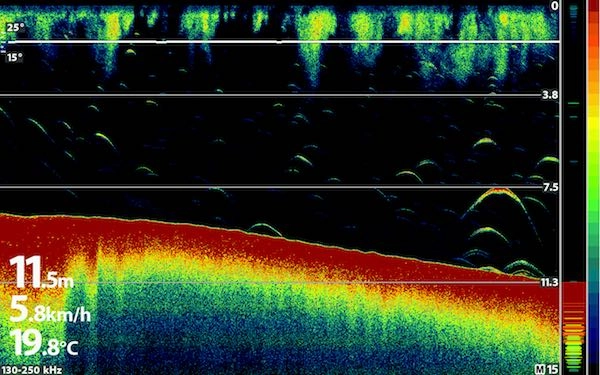
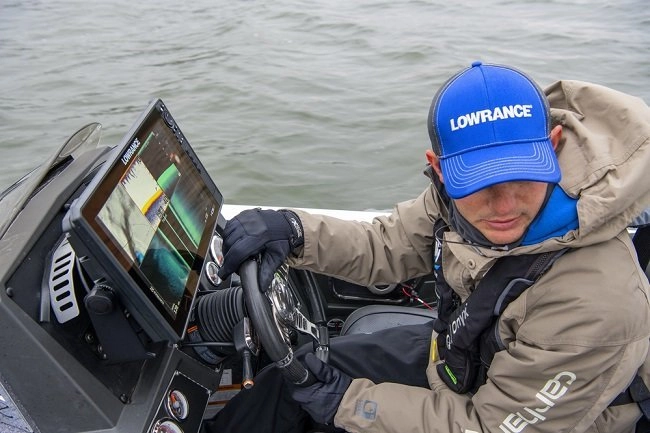
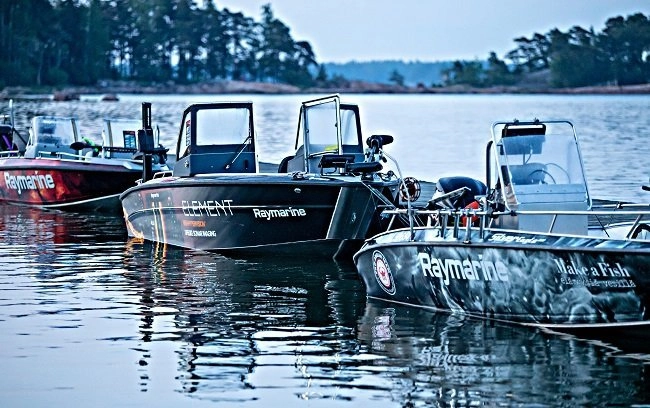
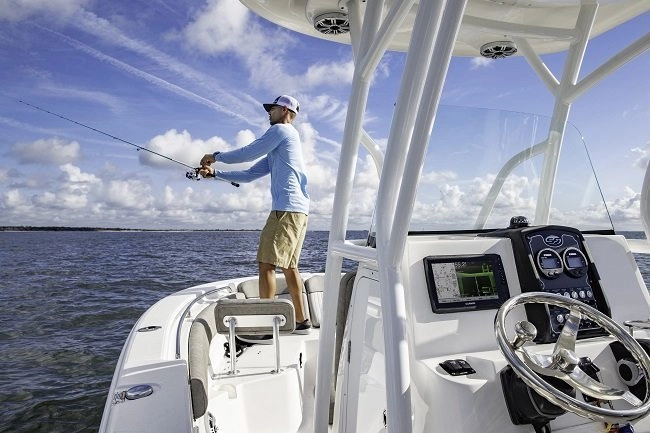
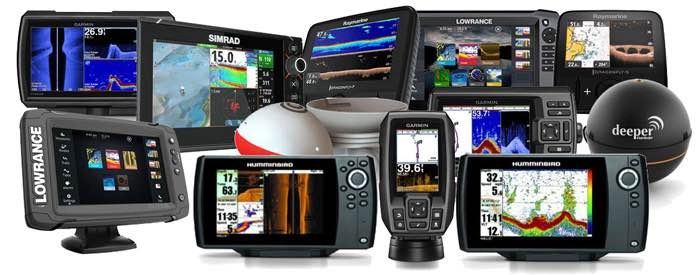
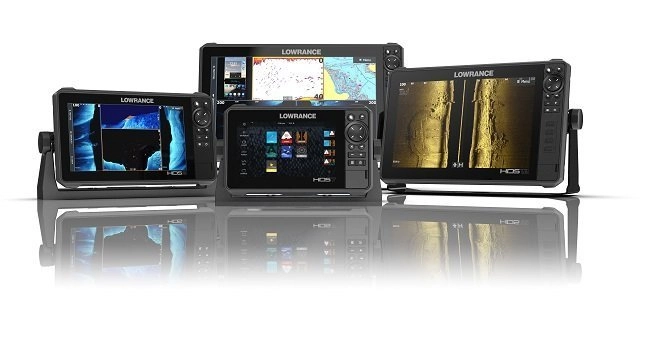
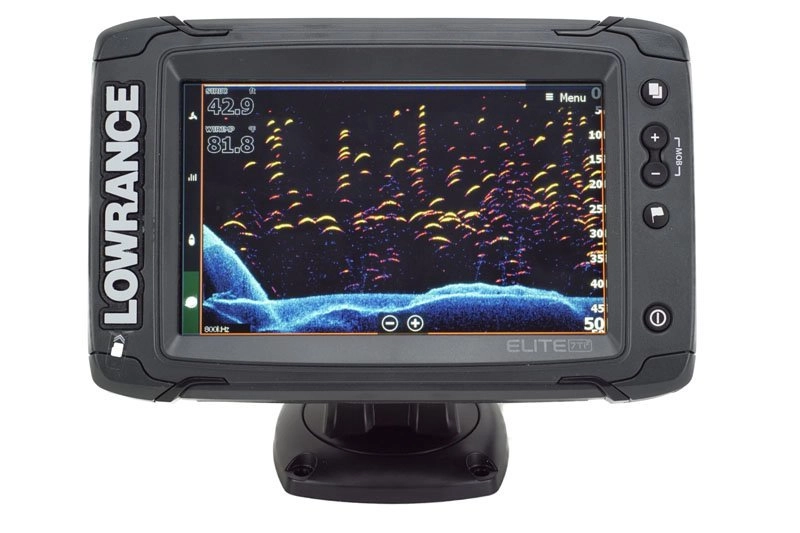
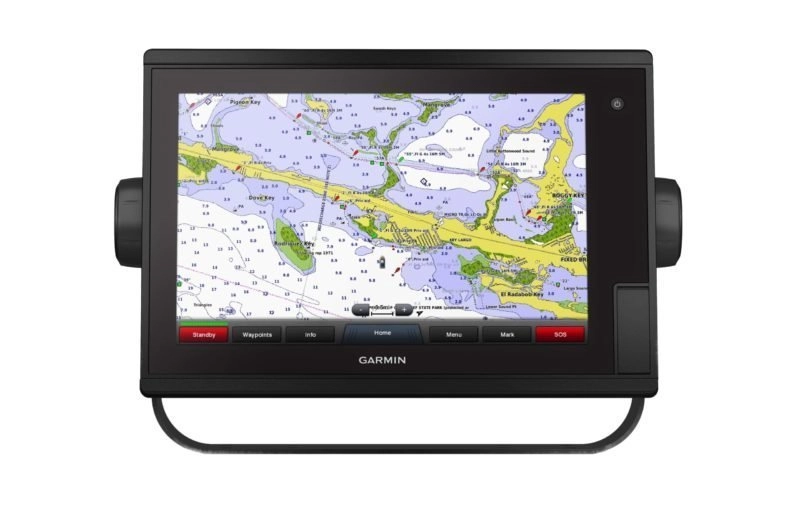
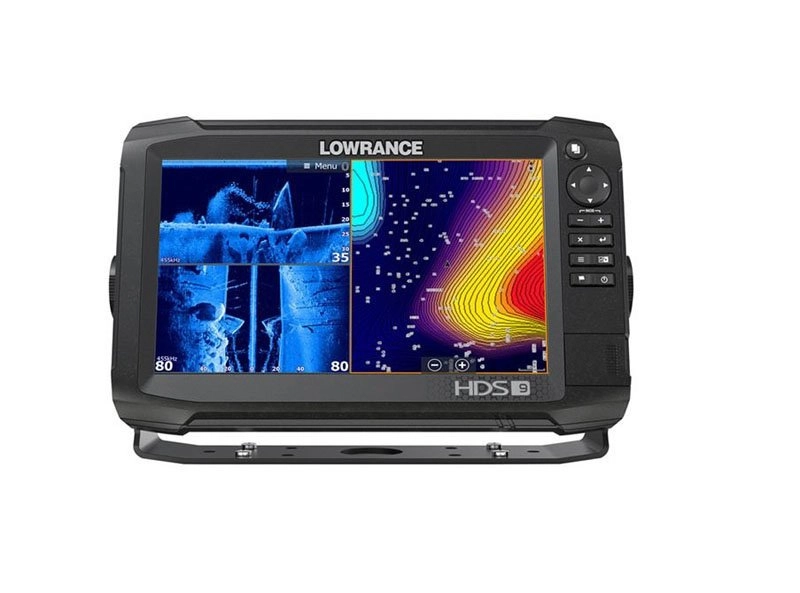
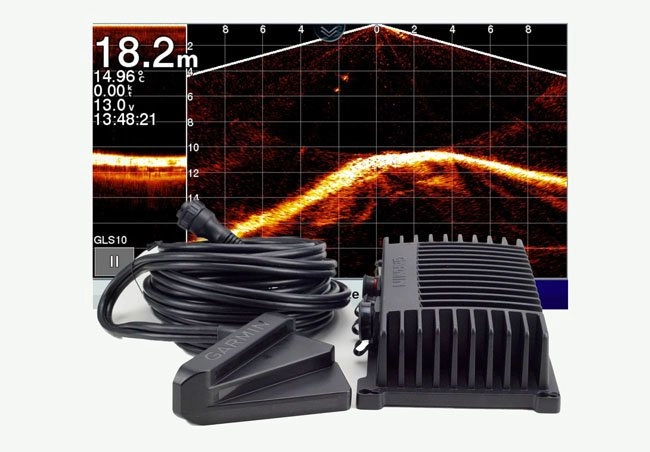

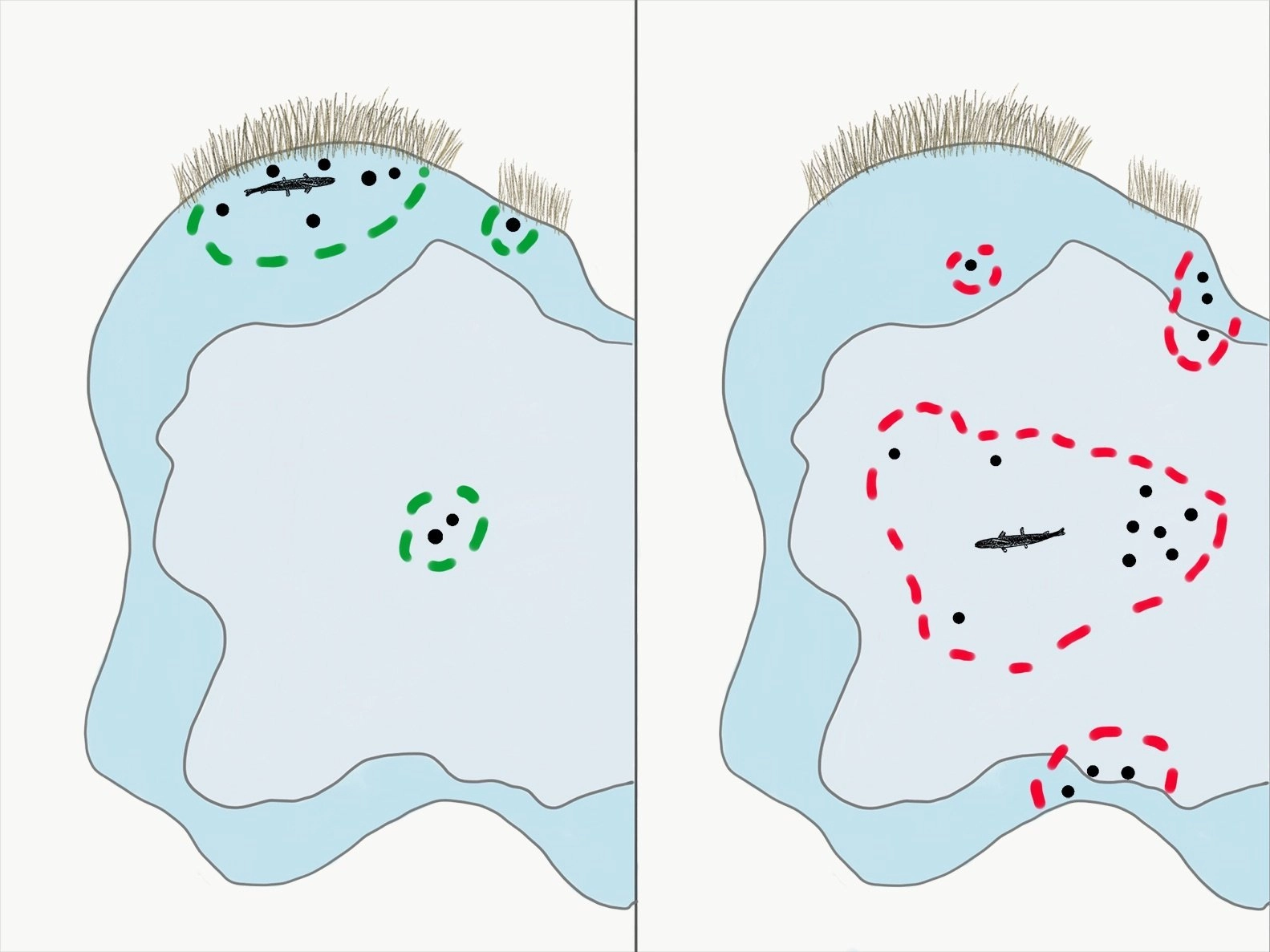

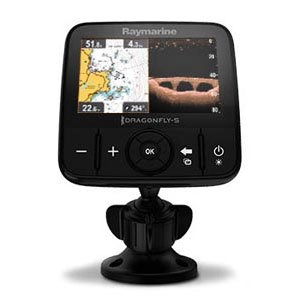
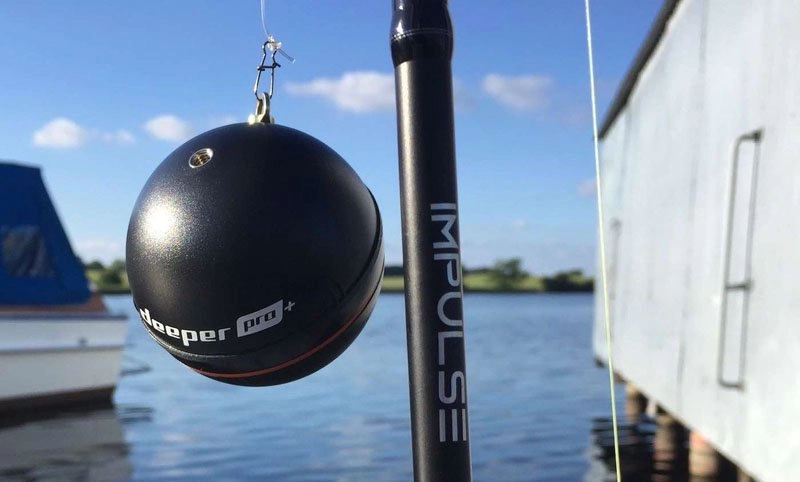
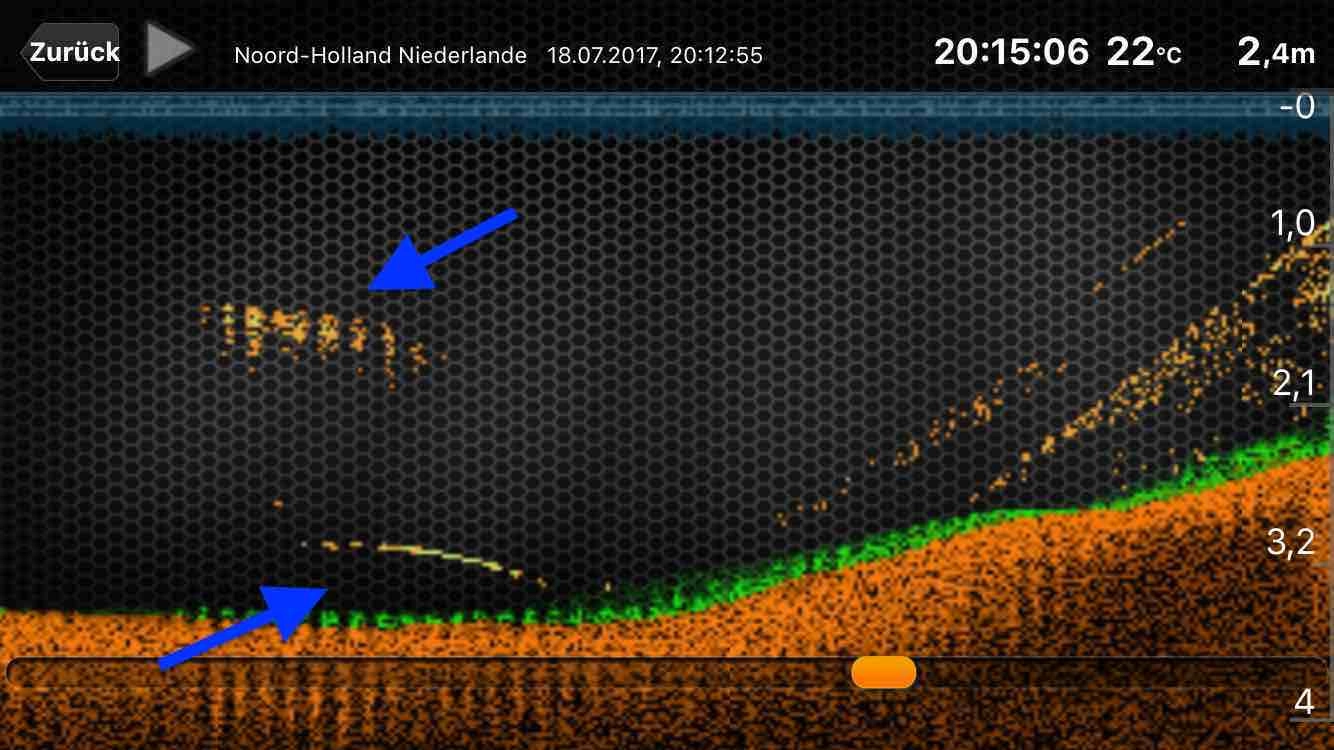



Raphaël G
Vladimir M
NICHOLAS JOHN REECY
Henrik
Dr. Manfred Marx
Andreas Witz
AK
Lübbe Wolfgang
Kalksee
Enrico Indelicato
Udo
Josef Weiss
Peter
Holger Just
Matthias Wappler
M. Hermanns
TACKLEFEVER